We often think of reflection photography as taking place in landscapes and nature, such as a beautiful lake with mountains reflected on a large scale. But urban scenes and busy cities provide us with many wonderful opportunities for unique reflection images. In this tutorial, you’ll discover 7 great tips for producing the most sensational and creative iPhone reflection photos in urban locations.
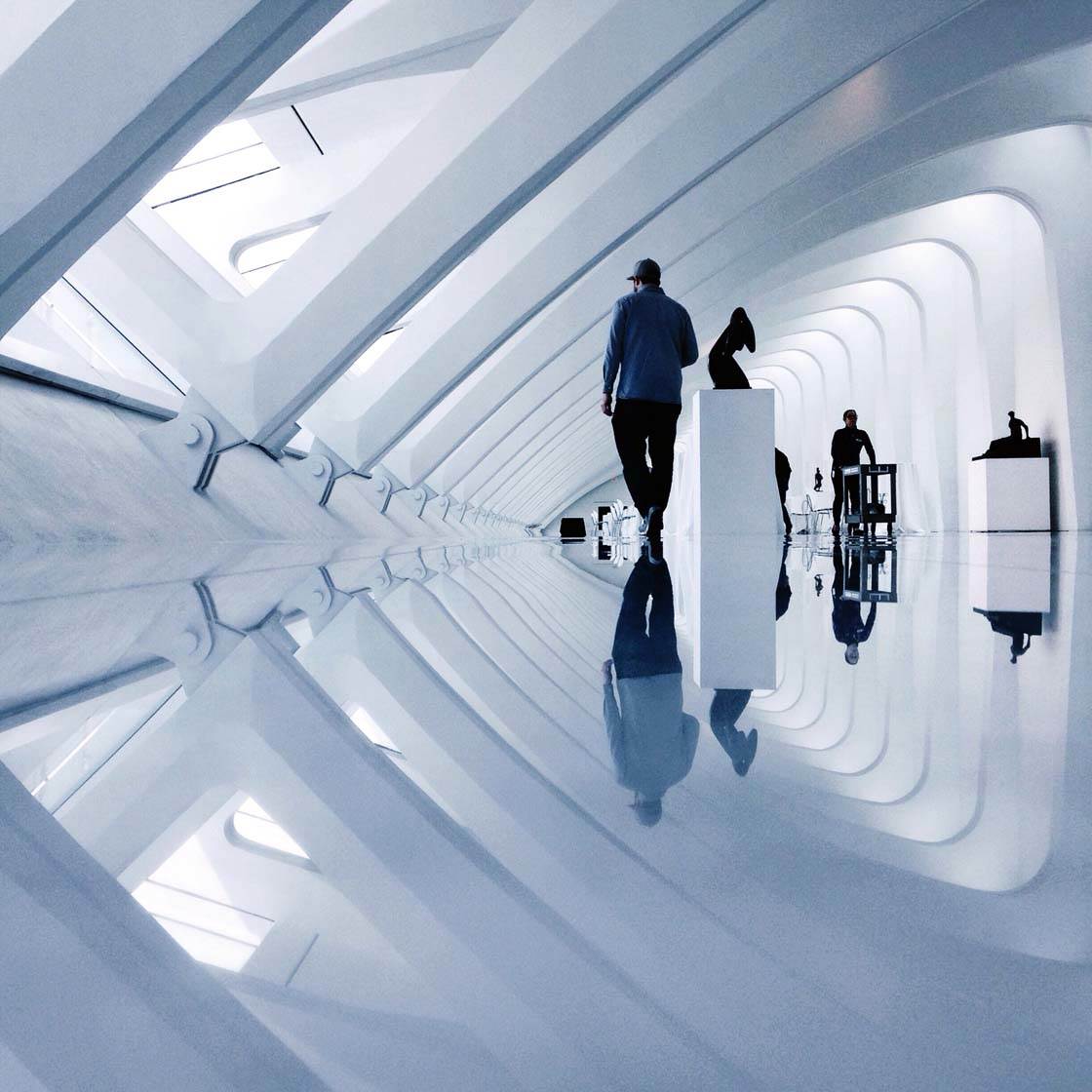
Capturing good reflection photos can be a challenging but rewarding experience. As you search out interesting reflections and move around to obtain the perfect angle you’ll start to see the world in a whole new light.
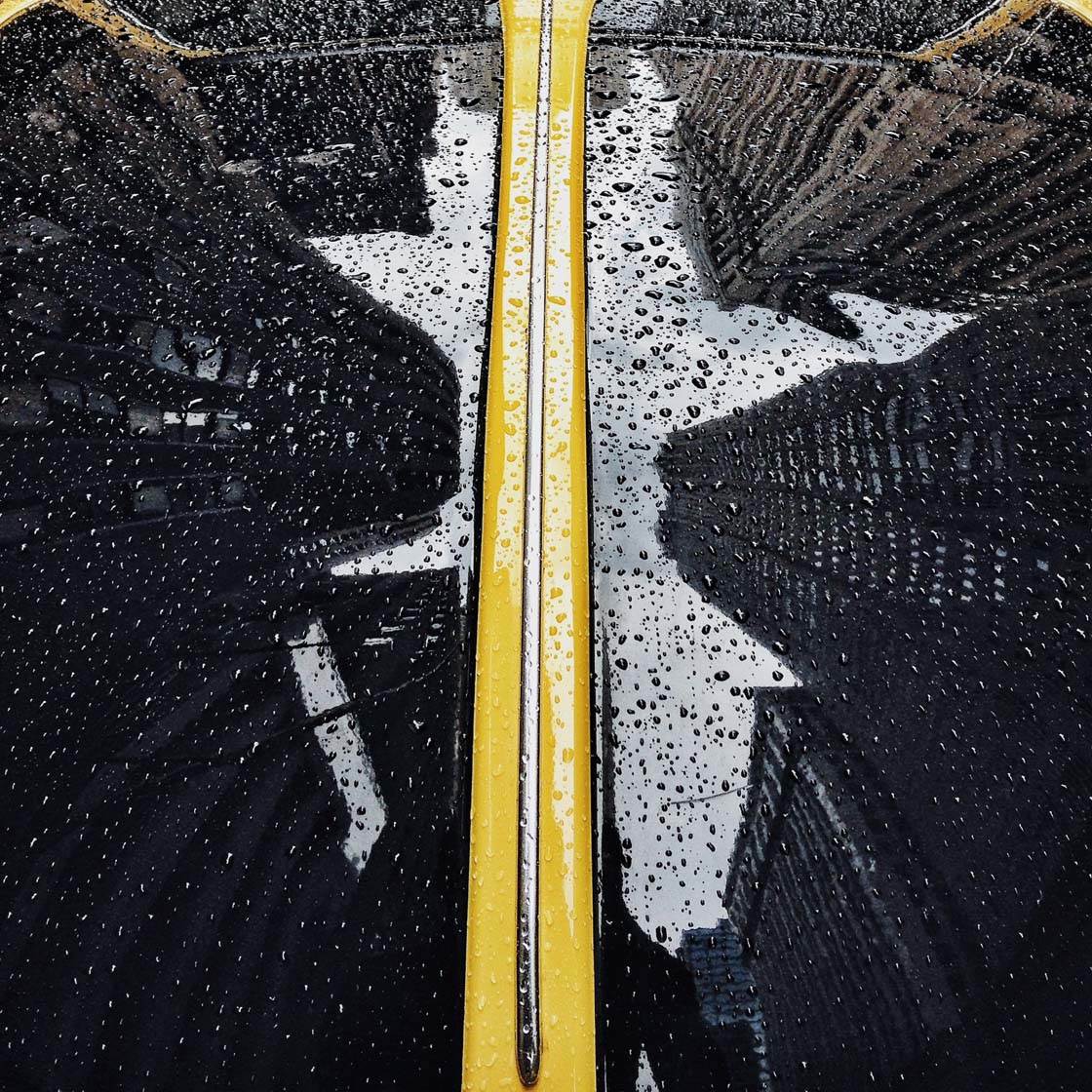
You’ll begin to see reflections in all sorts of surfaces that you would have previously overlooked. And you’ll start to notice how different kinds of light reflect off different surfaces in unusual ways.
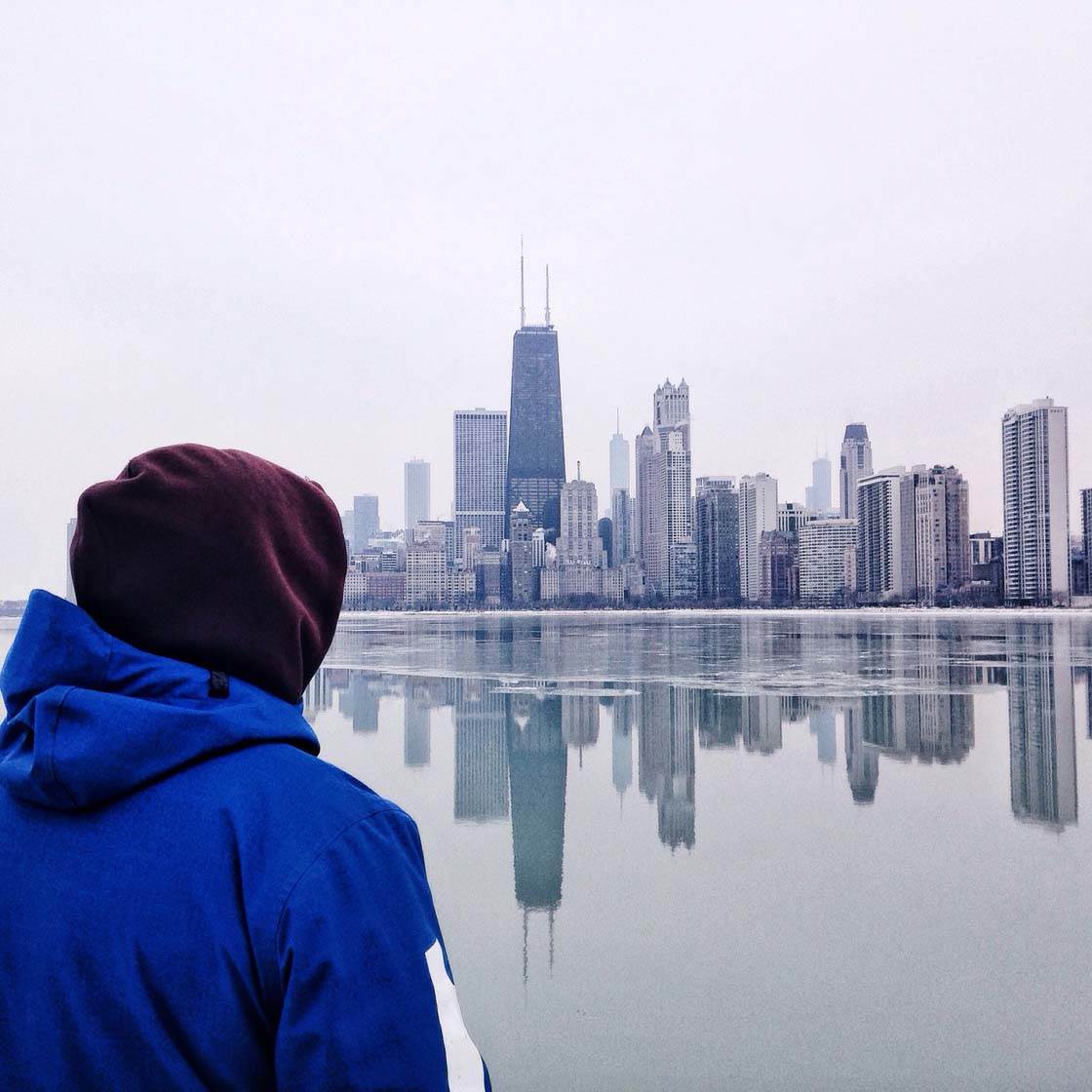
You’ll discover symmetry where you hadn’t spotted it before. And you’ll become aware of how movement and texture in a reflective surface creates unique abstract reflections.
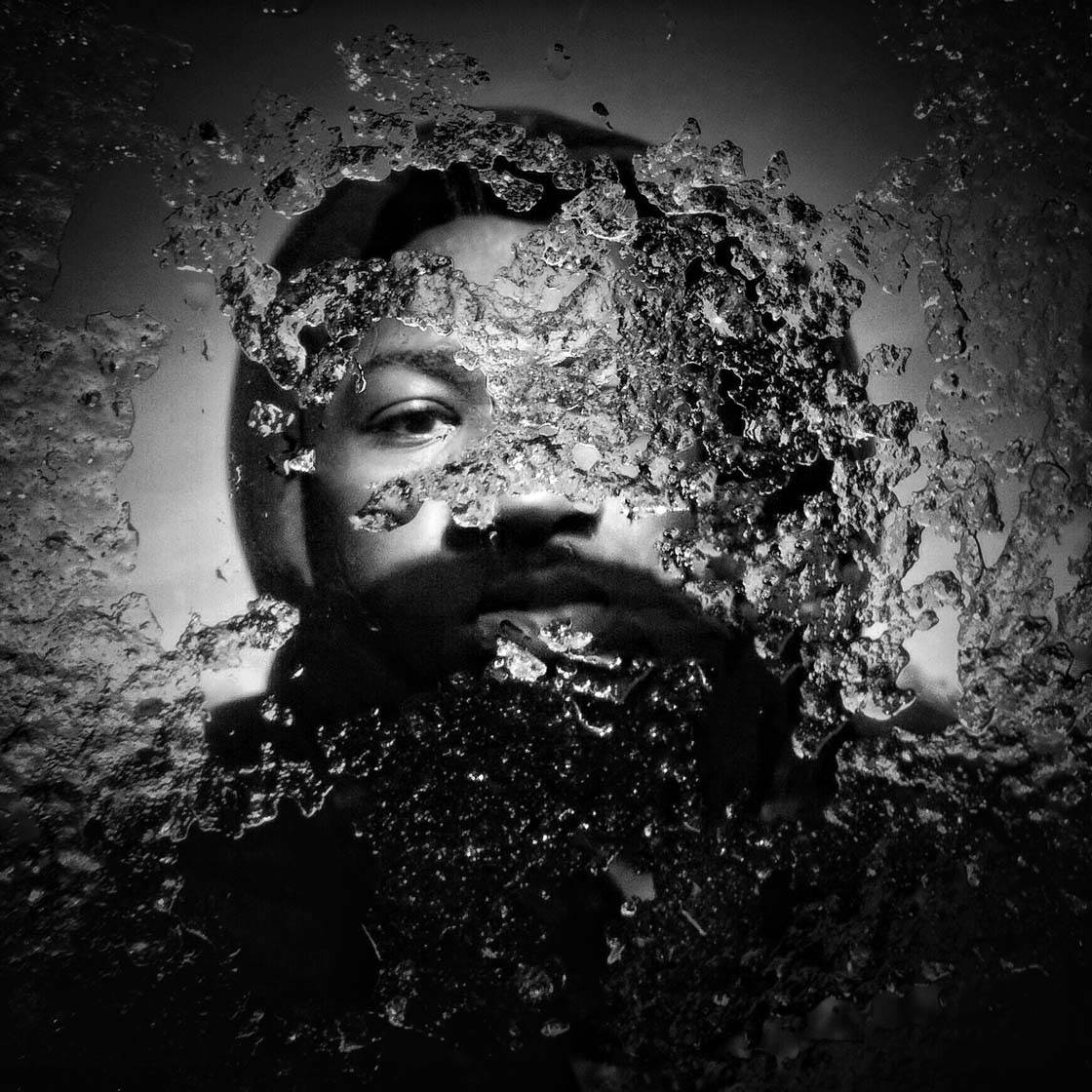
Reflection photography is a good mental and creative exercise because you have to step out of the box to capture interesting angles and perspectives.
So let’s take a look at how you can shoot incredible reflection photos with your iPhone, both out on the street and inside buildings.
1. Look For Shiny Surfaces
Any shiny surface has the potential for great reflections that you can capture with your iPhone. Keep your eyes peeled for highly polished and reflective surfaces, using the surrounding environment to your advantage.
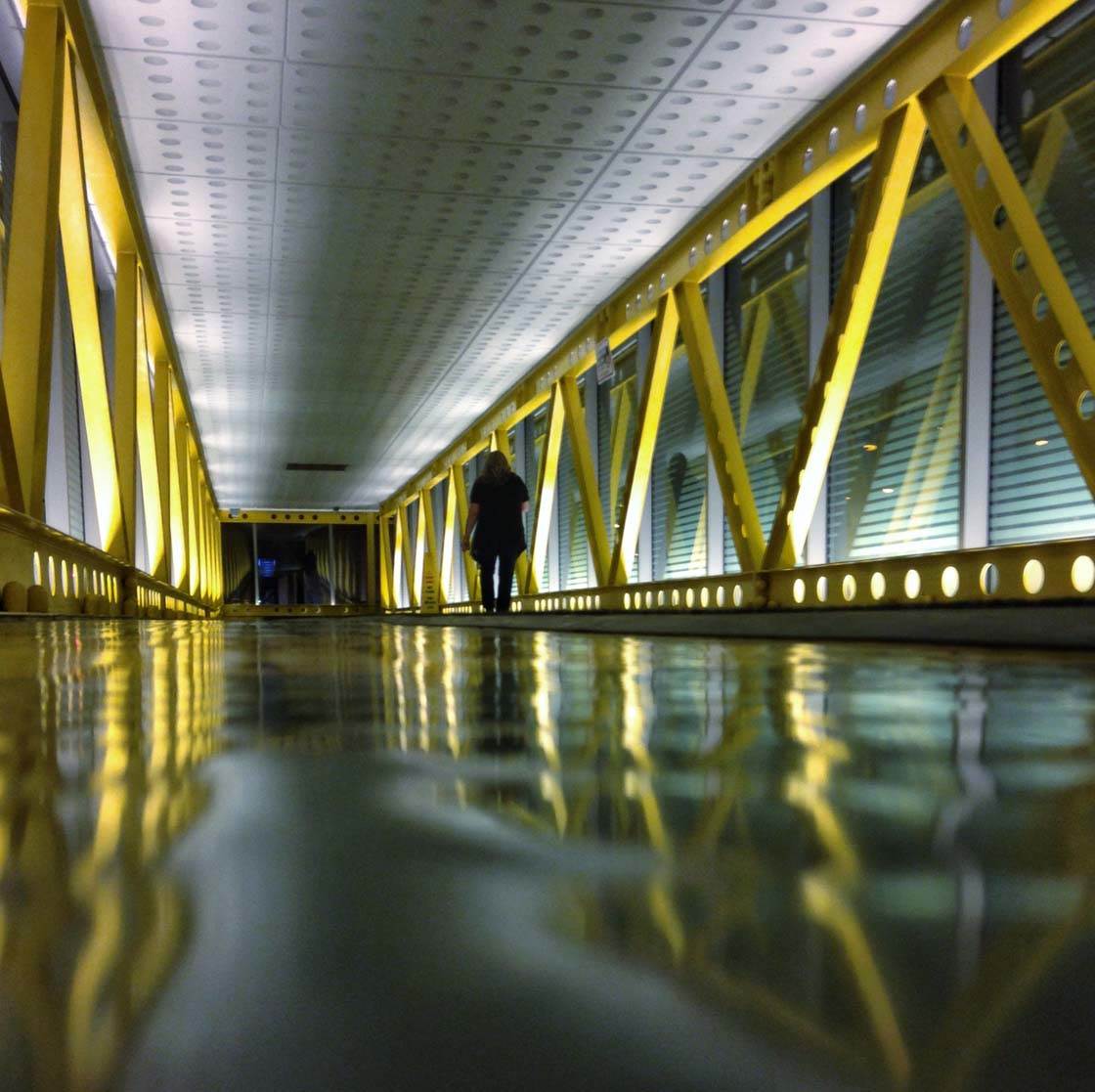
The insides of buildings provide plenty of reflections for you to photograph. Polished floors, metal stairwell railings, large glass windows and other shiny components will all reflect surrounding objects if the light is right.
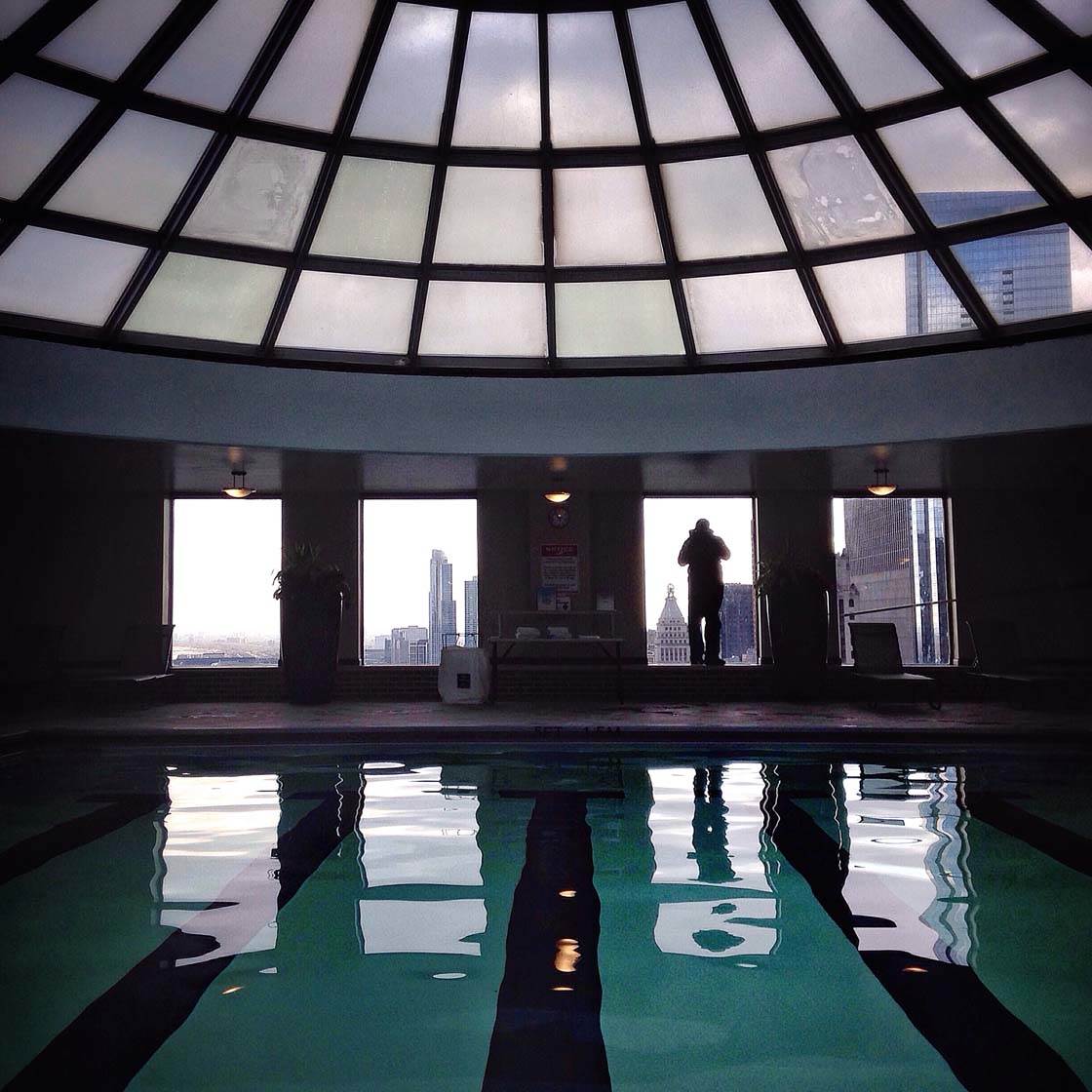
Water is also an excellent reflective surface that allows you to capture great reflections, whether indoors or outdoors. Just make sure that you have a light source hitting the water’s surface and something interesting to reflect in it.
If you’re shooting outdoors, a good place to start is metal and glass buildings, as well as other reflective structures. As long as there’s adequate light you should find great reflections in these places.
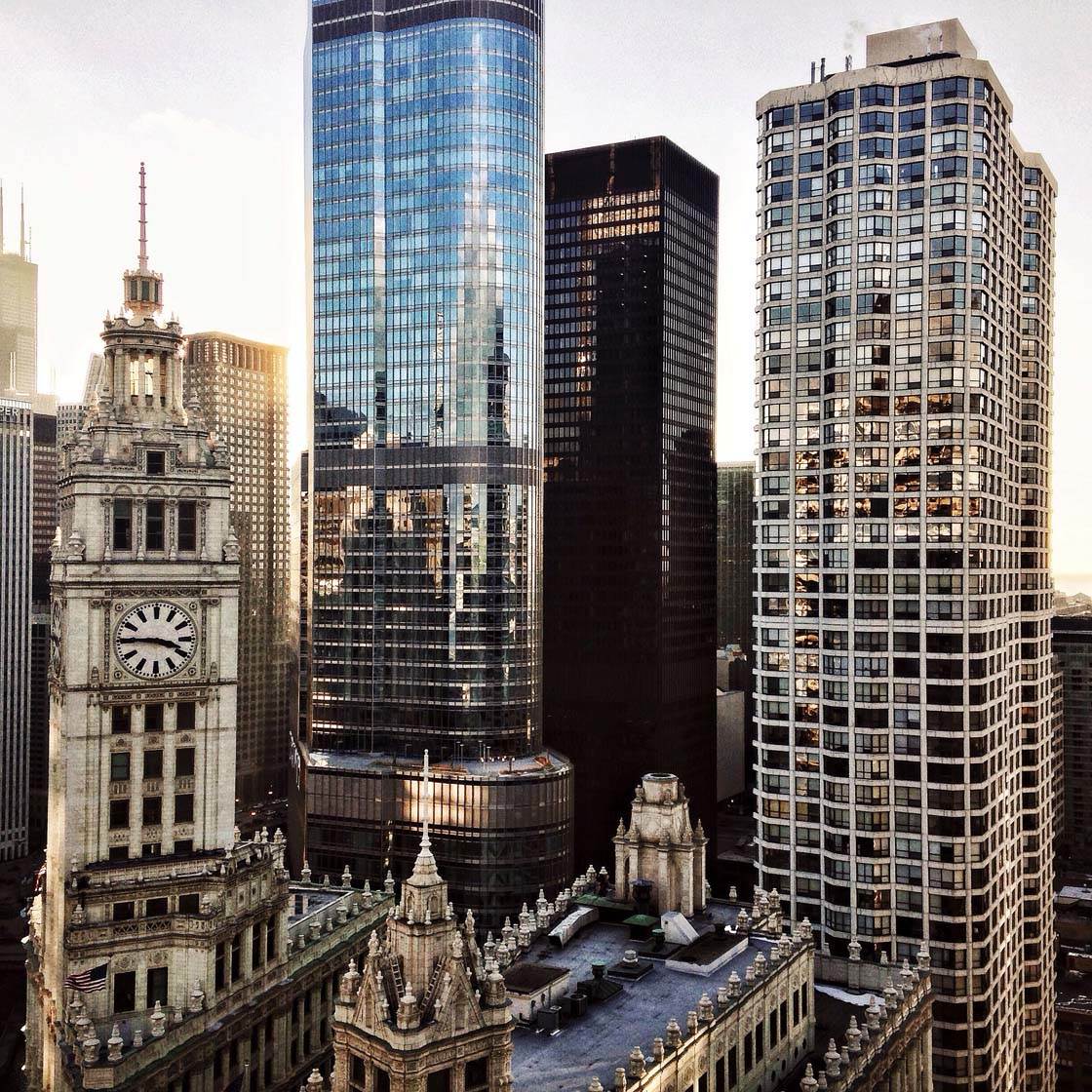
In the photo above, the reflections in the windows are enhanced by the warm light of golden hour. Shooting around the hours of sunrise and sunset is a great time to capture beautiful light in your reflections.
The best reflection photos are often created when there are clouds in the sky as they add a dramatic atmosphere to your photo. The picture below shows a reflection on a metal rooftop railing.
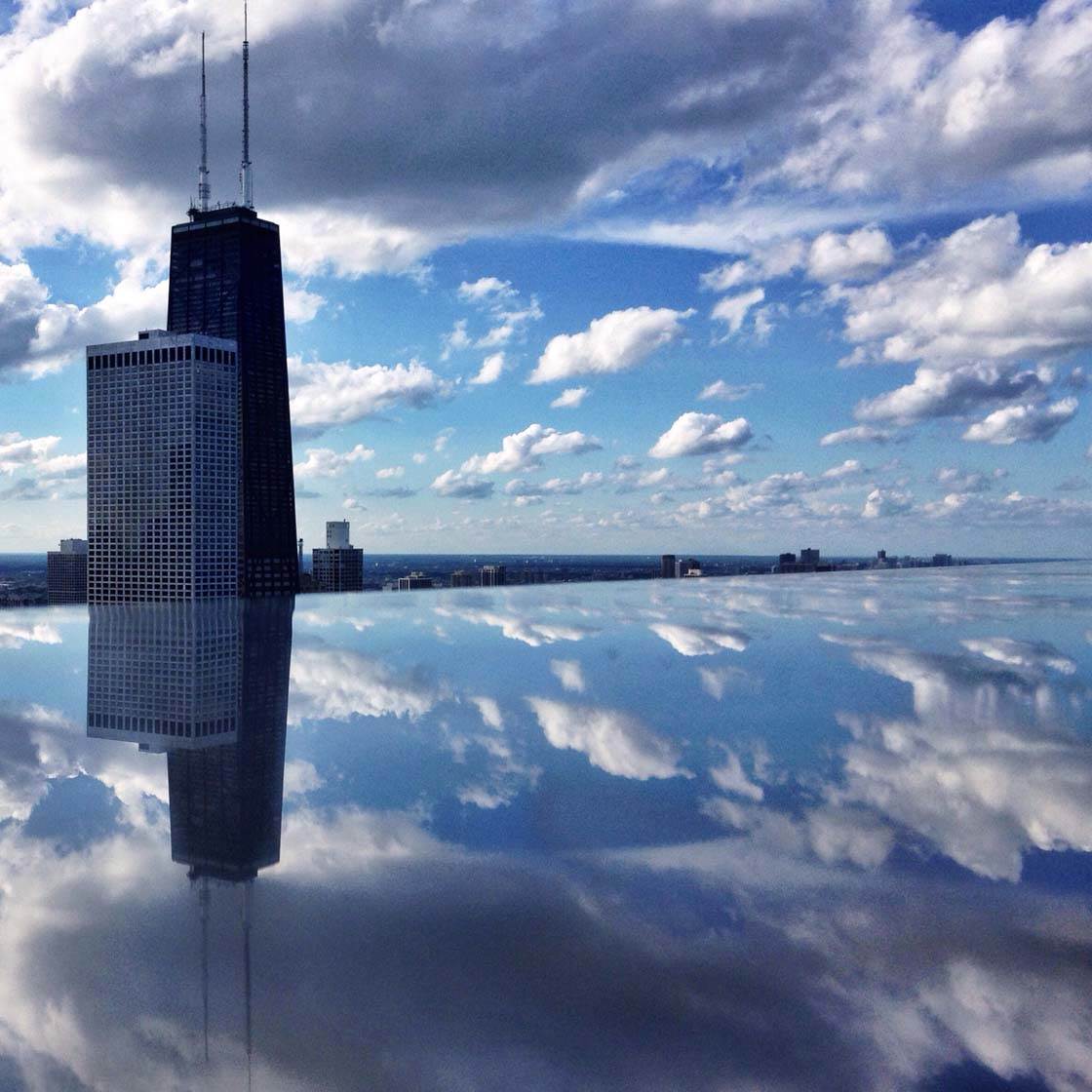
Just capturing a reflection in a shiny surface isn’t enough to make a great photo. Be sure to have a strong subject in your reflection, such as a person or building, in order to add a focal point to the image.
Leading lines can be used to map out a good reflection in the scenery. Lines help to draw the viewer into the scene, and combined with the symmetry created by the reflection they can have a very strong visual impact on your image.
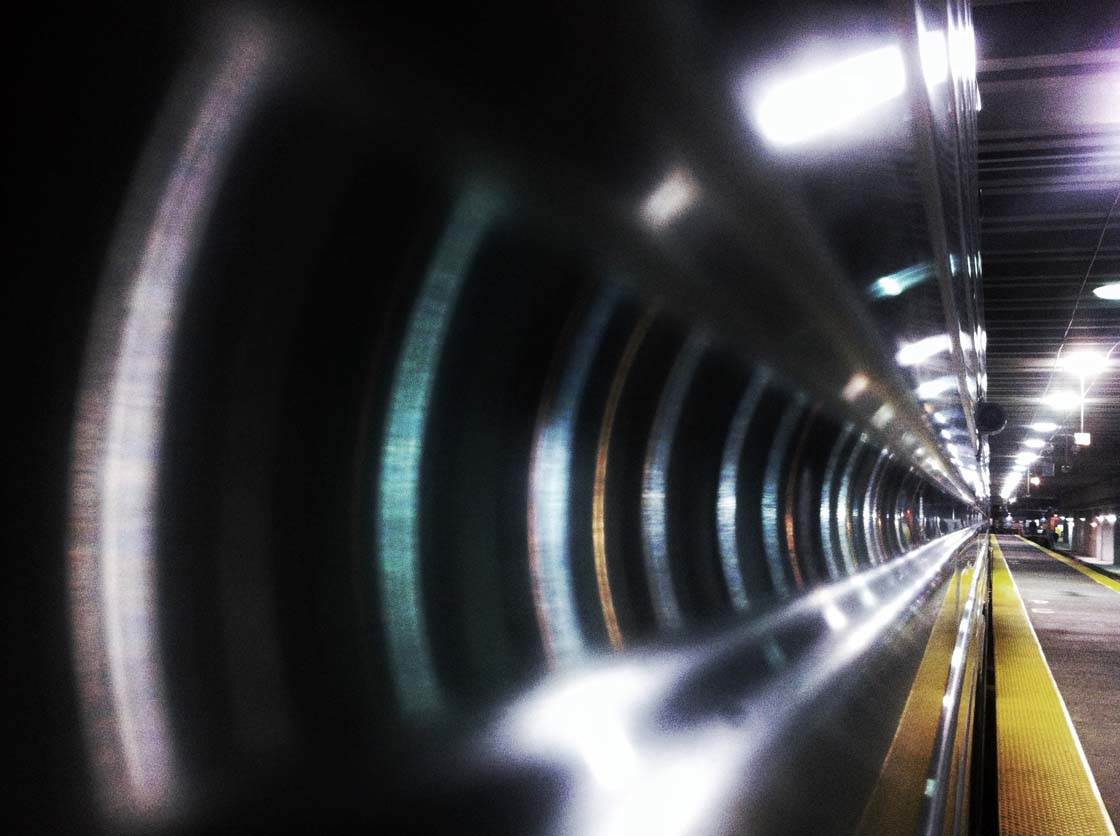
In certain situations, like when shooting the side of this train, the only way you can create a strong visual impact is to get the lens of the iPhone very close to the reflective surface and then vary the angle until you achieve a good composition.
Many reflections aren’t obvious from a distance, so you often need to get closer with your phone and then experiment with angles until you achieve the desired effect.
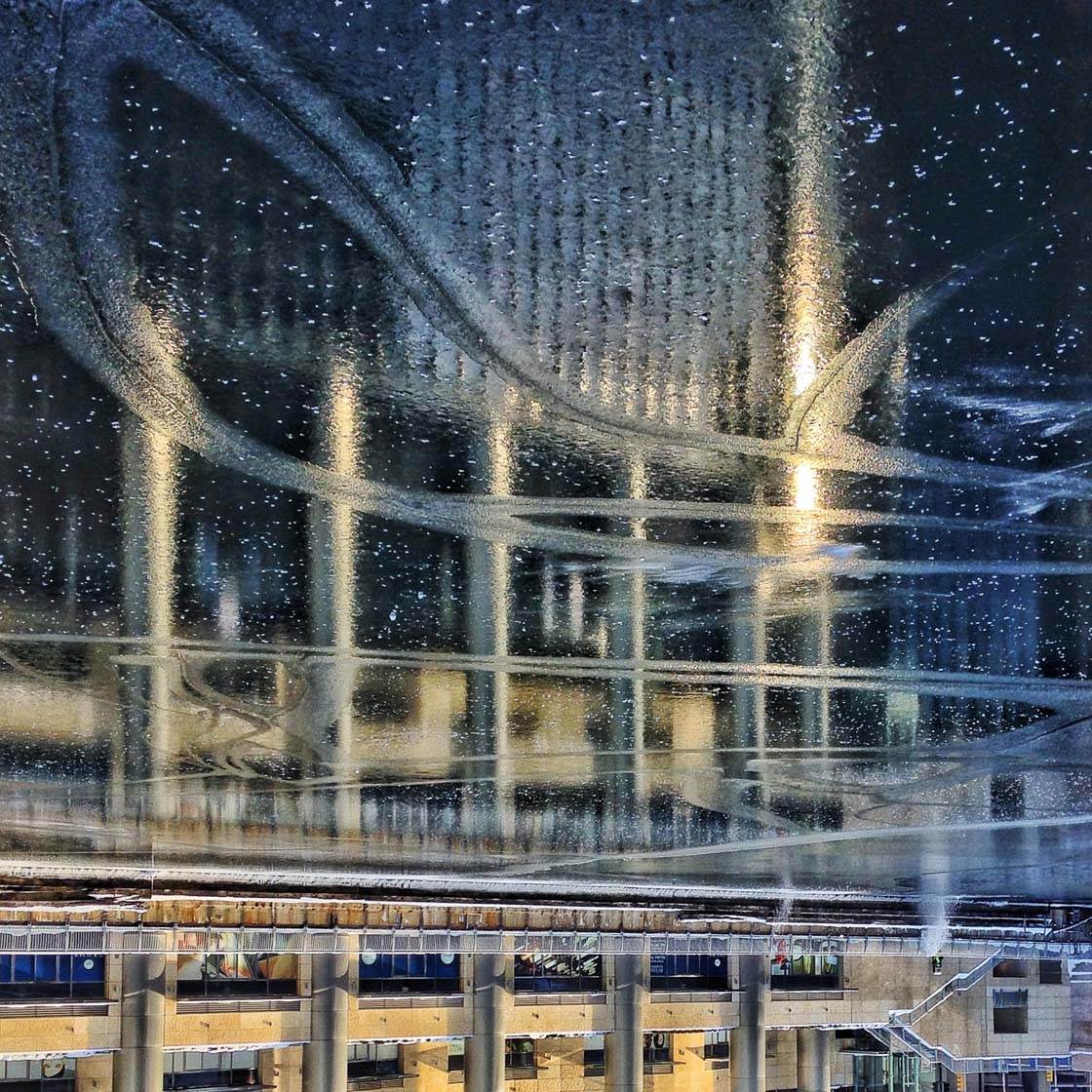
When the temperature drops during winter, look for icy surfaces on ponds, lakes, puddles and other bodies of water. Frozen bodies of water combined with the perfect daylight will allow you to capture wonderful abstract reflections.
When photographing icy reflections, inverting the image vertically in post-processing can create a more intriguing image. I used this technique with the photo above.
2. Find Puddle Reflections
A great place to find water for reflection photos is in small puddles. After it’s rained, look for puddles in places with compelling architecture, cars, people standing or in motion, etc. Such locations are the perfect backdrop for puddle reflections.
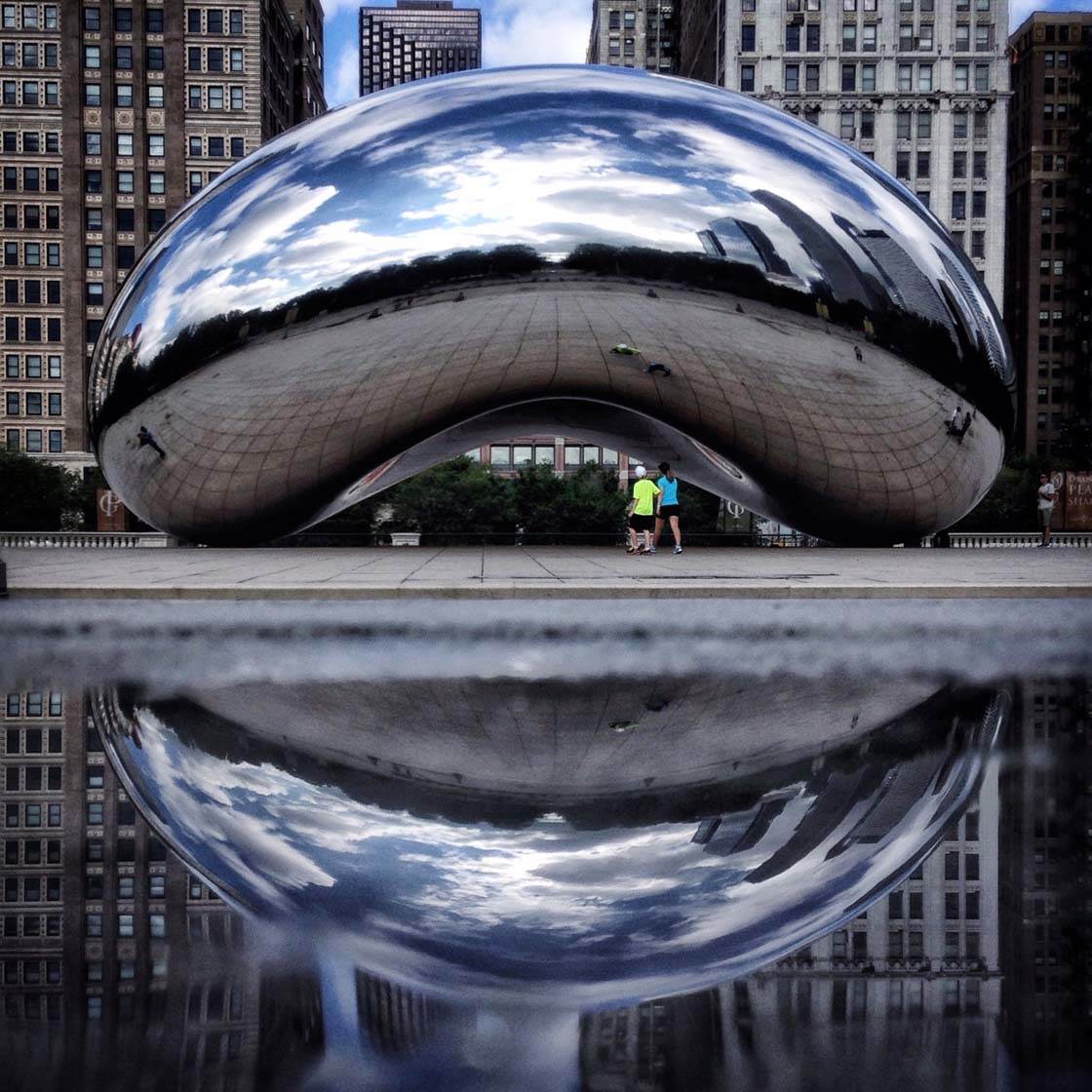
A good puddle doesn’t necessarily have to be on the street level. Puddles on other surfaces such as table tops will also create interesting reflections from a higher perspective.
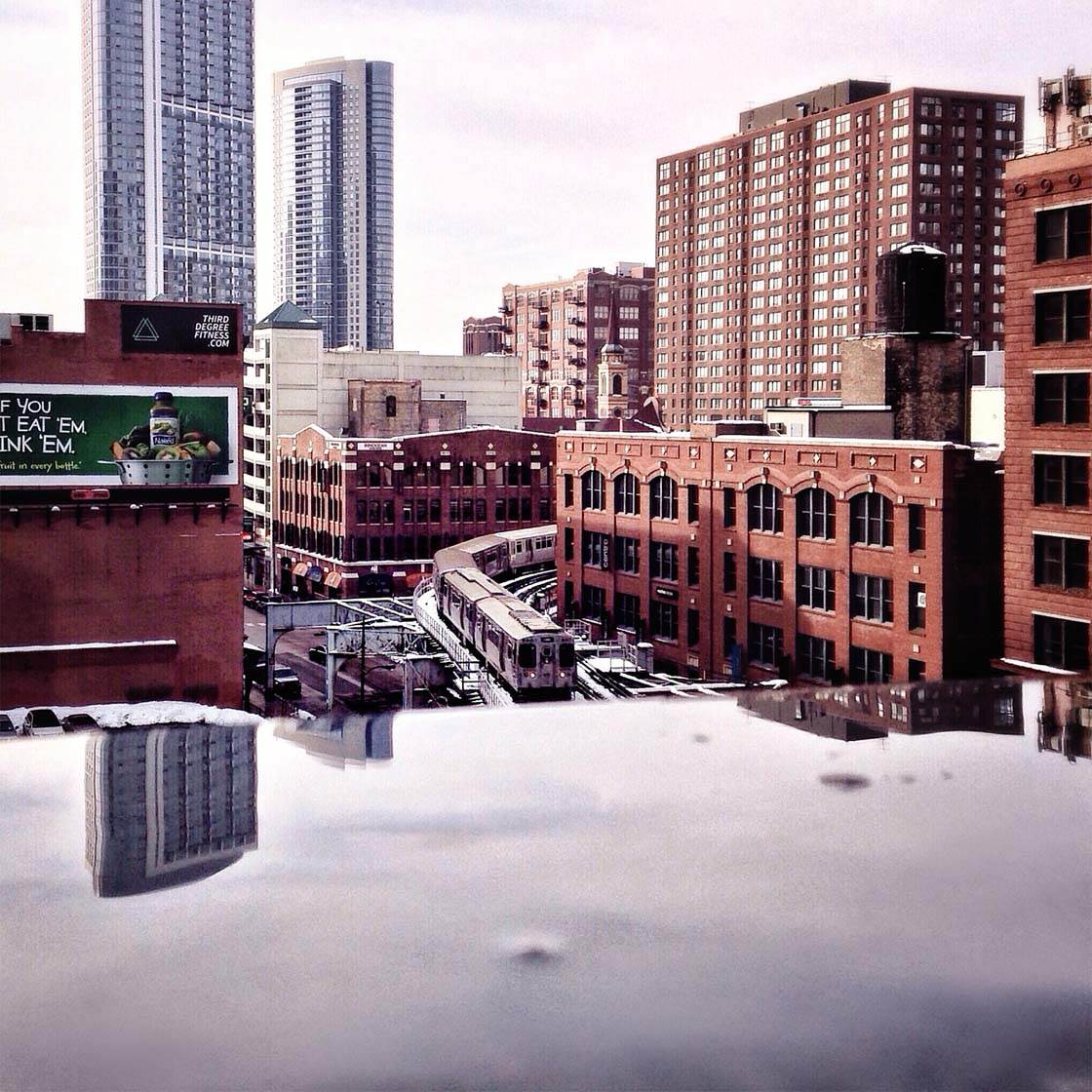
Alleyways are a good location for puddle reflections since they usually have dark shadows and leading lines which add to the overall composition of your image.
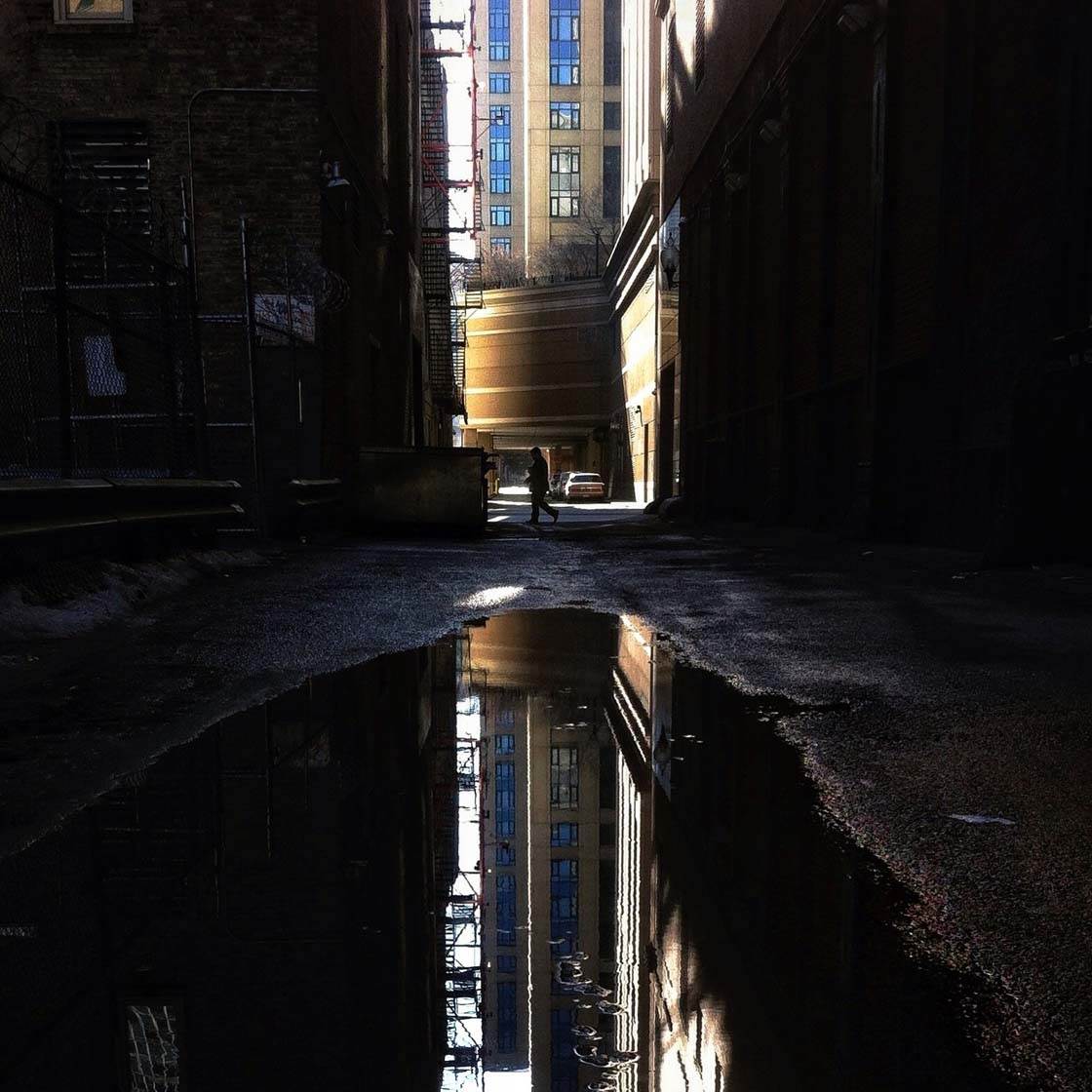
When taking a puddle shot on the street, crouch down low and hold your iPhone close to the water level. Flip your phone upside down so that you can get the lens closer to the water. It will be easier to create symmetry if the phone is close to the water’s surface.
If you find a good puddle but the lighting isn’t conducive to creating reflections, try returning later in the day in order to take advantage of the best lighting.
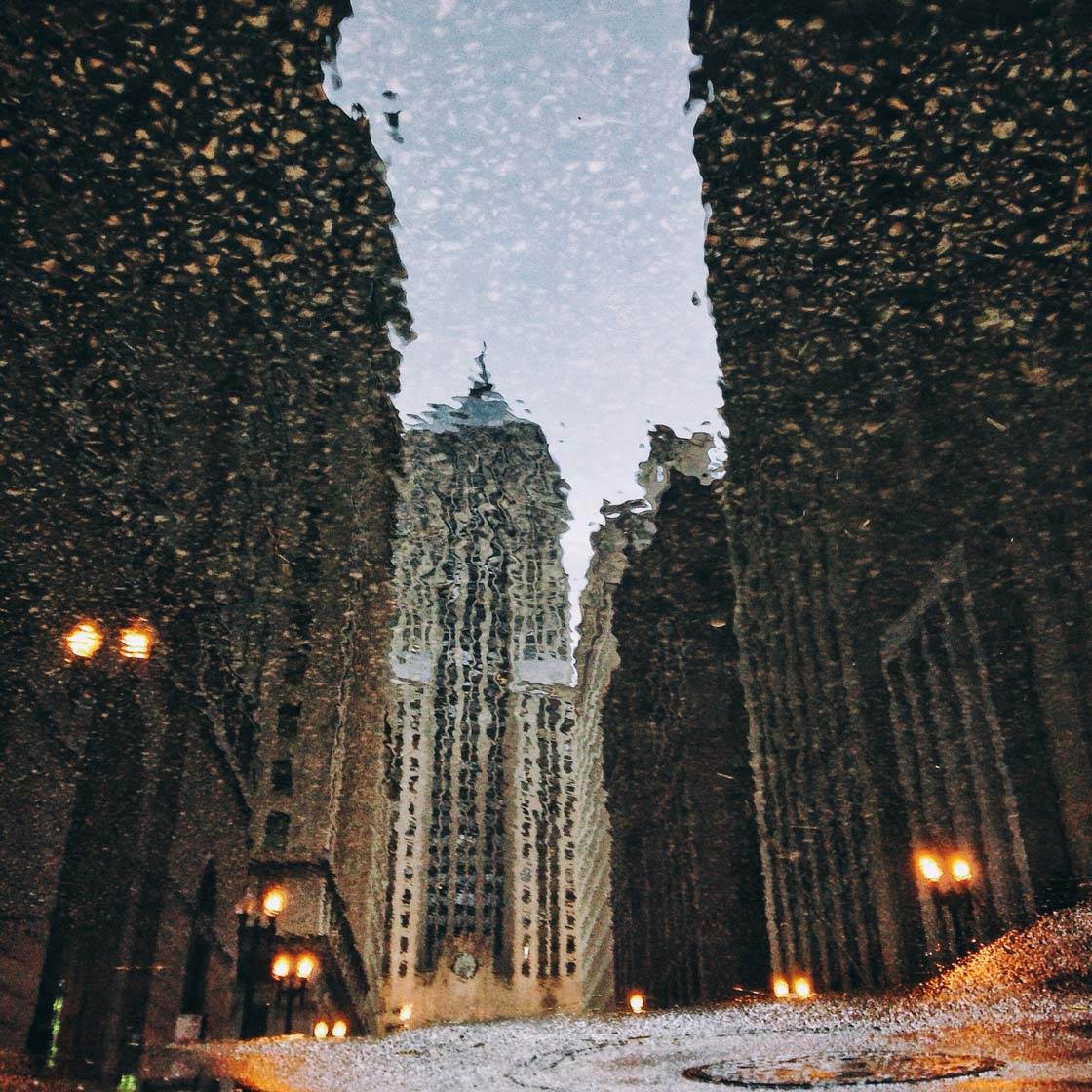
When shooting puddle reflections, experiment with different angles to create a unique perspective. Move around and vary the vertical orientation of your phone until you capture the best angle.
Flipping your image upside down in post-processing can create some intriguing results, so bear this in mind when shooting your puddle. This technique also allows the viewer to appreciate more of the individual components in the reflection since they’re no longer upside down.
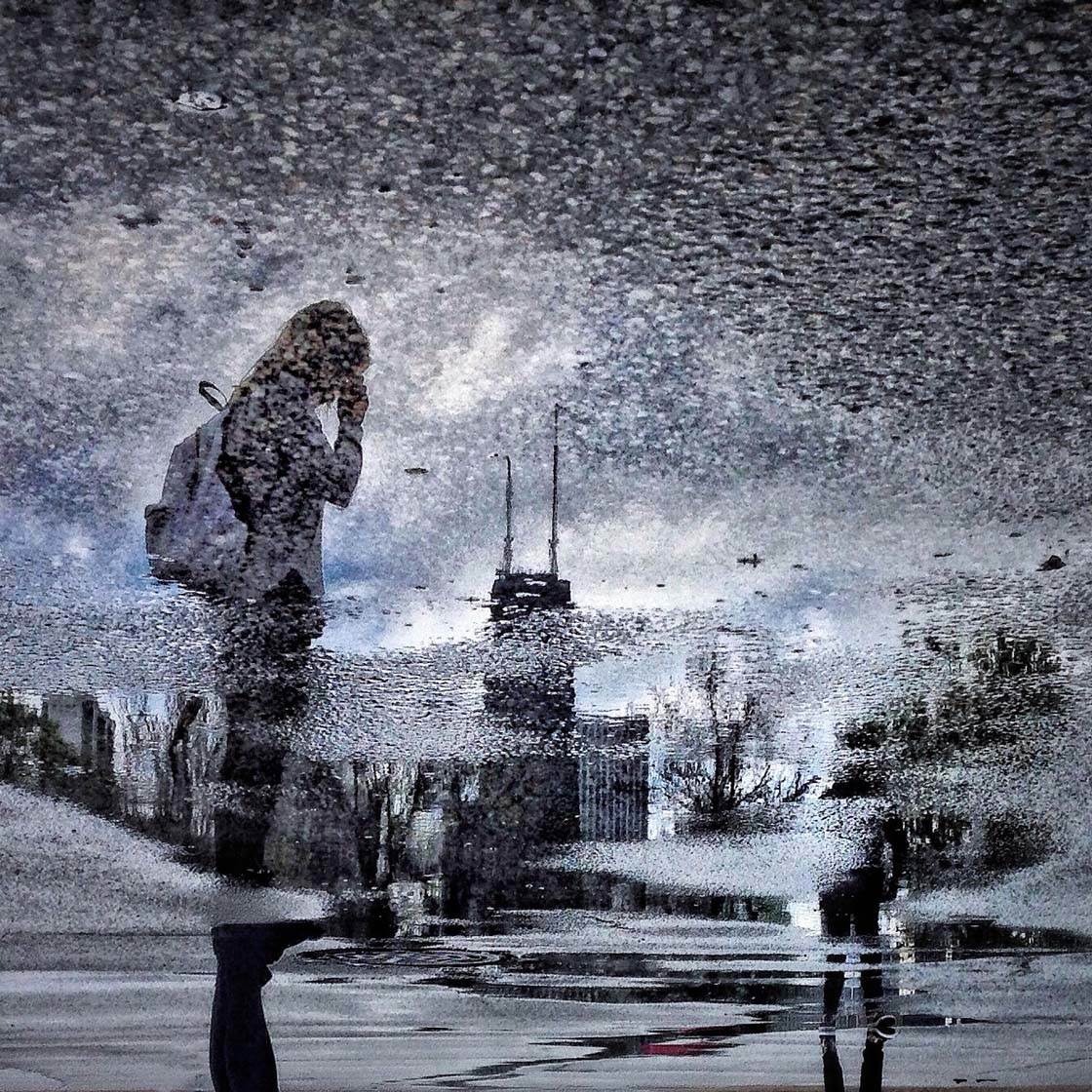
A perfect puddle shot doesn’t necessarily have to be symmetrical or shot with the phone really close to the water’s surface. Each puddle is unique, so find what works best in that particular situation.
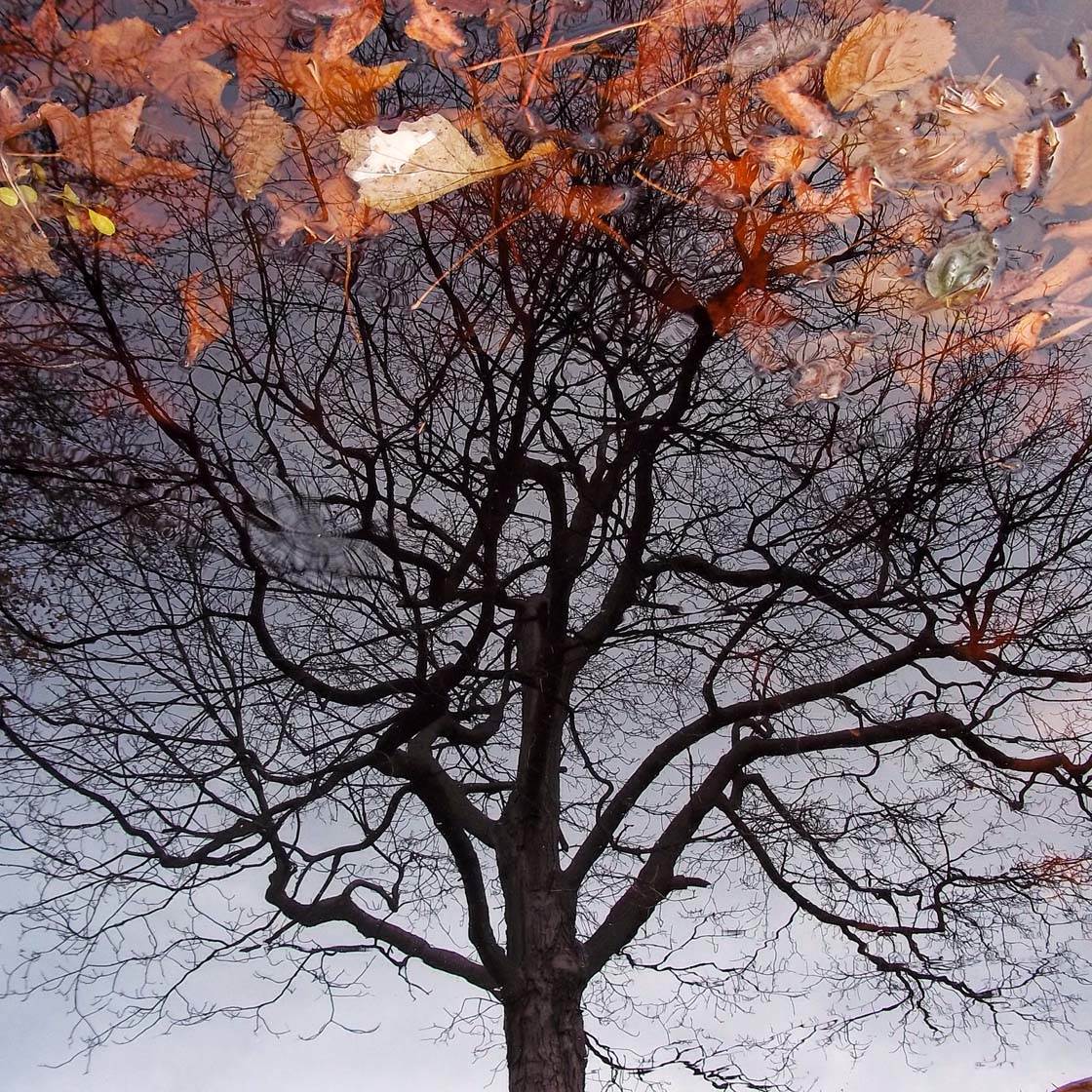
Lastly, make sure you don’t drop your phone in the water! If you’re worried about getting your iPhone wet it’s worth investing in a waterproof case such as the Lifeproof.
3. Shoot On Rainy Days
A rainy day provides extra opportunities for reflection photography that you wouldn’t normally get on a dry day. In addition to puddles, when the ground is wet the entire street will become a mirror-like reflective surface.
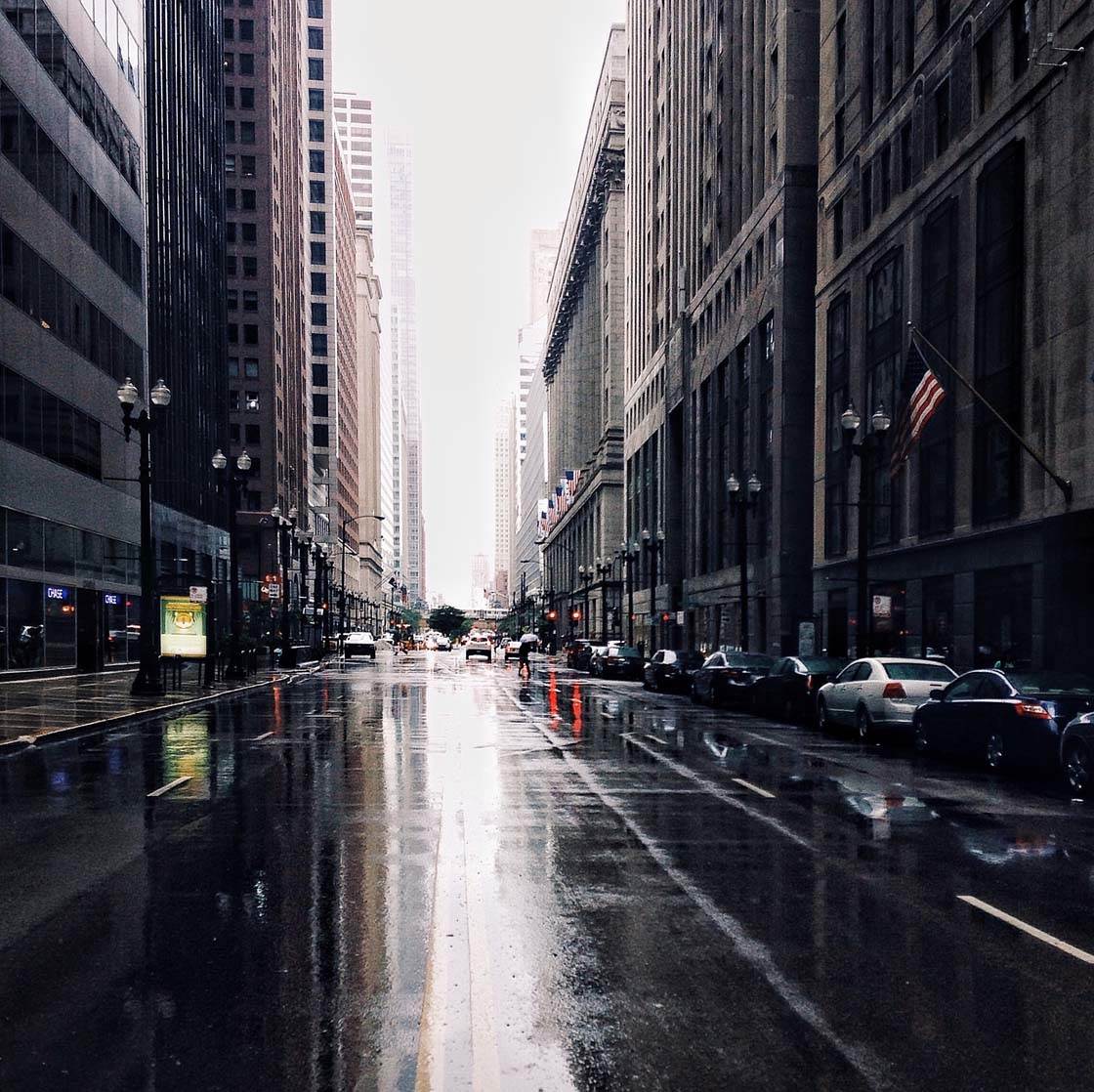
Any lights and objects in the scene will be reflected in the water on the ground. Reflected street lights can add a wonderful warm glow to the lower part of your photo. Without water and reflections the roads and sidewalks would normally appear very dark in your image.
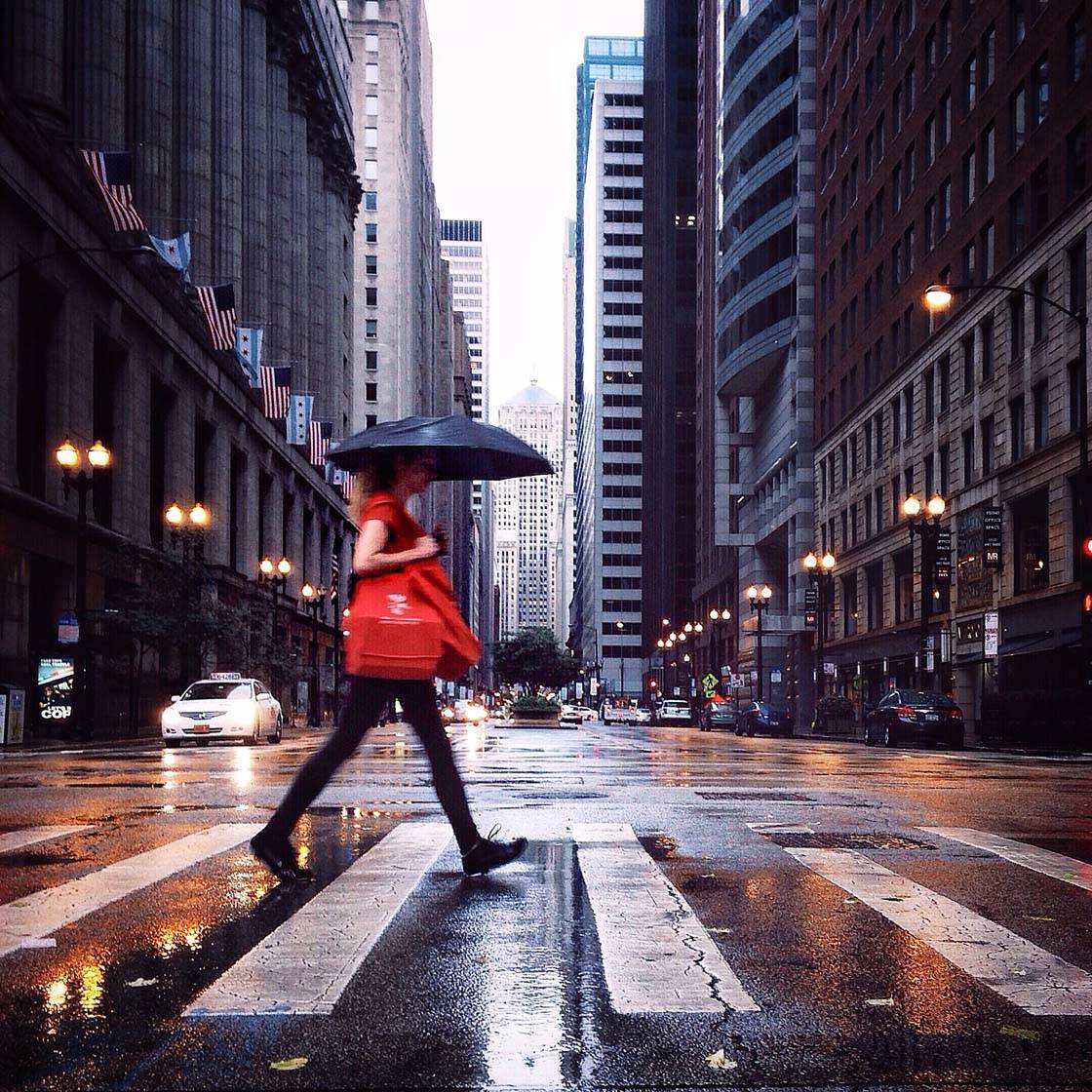
An added bonus of shooting on a rainy day is that lots of people will be carrying umbrellas. These can act as props in your photo that add a strong shape and splash of color to your street reflection photography.
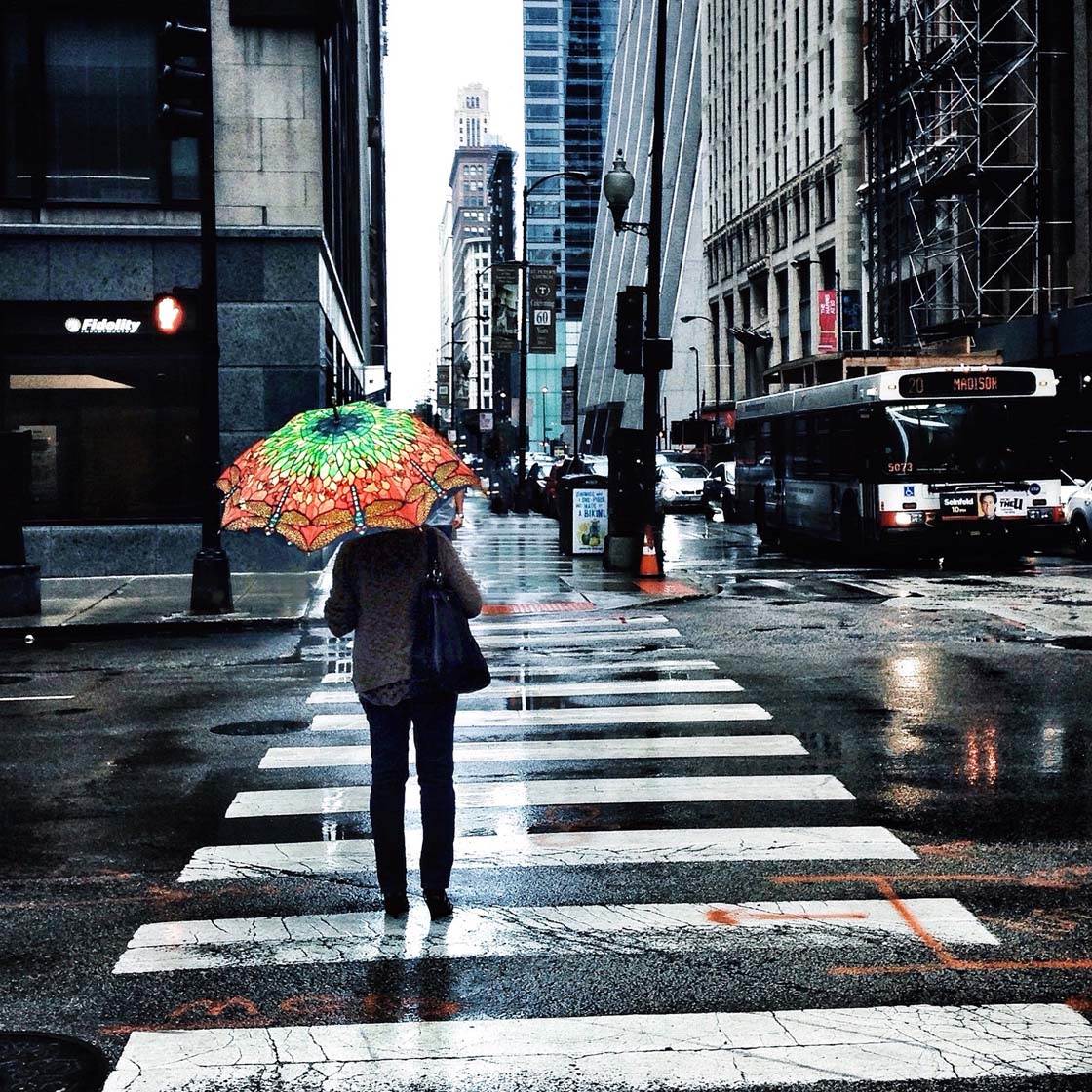
In post-processing you can use Snapseed’s selective adjust tool to enhance the contrast and color saturation of the reflections on the street. This will help to emphasize the reflections if they didn’t appear that clear in the original image.
4. Capture Reflections In Water Droplets
On a rainy day, take advantage of water droplet formations on glass and metallic surfaces. You’ll often find rain drops on glass panes at a bus stop, coffee shop windows, the top of a trash can, and any glass or metallic surface on a car.
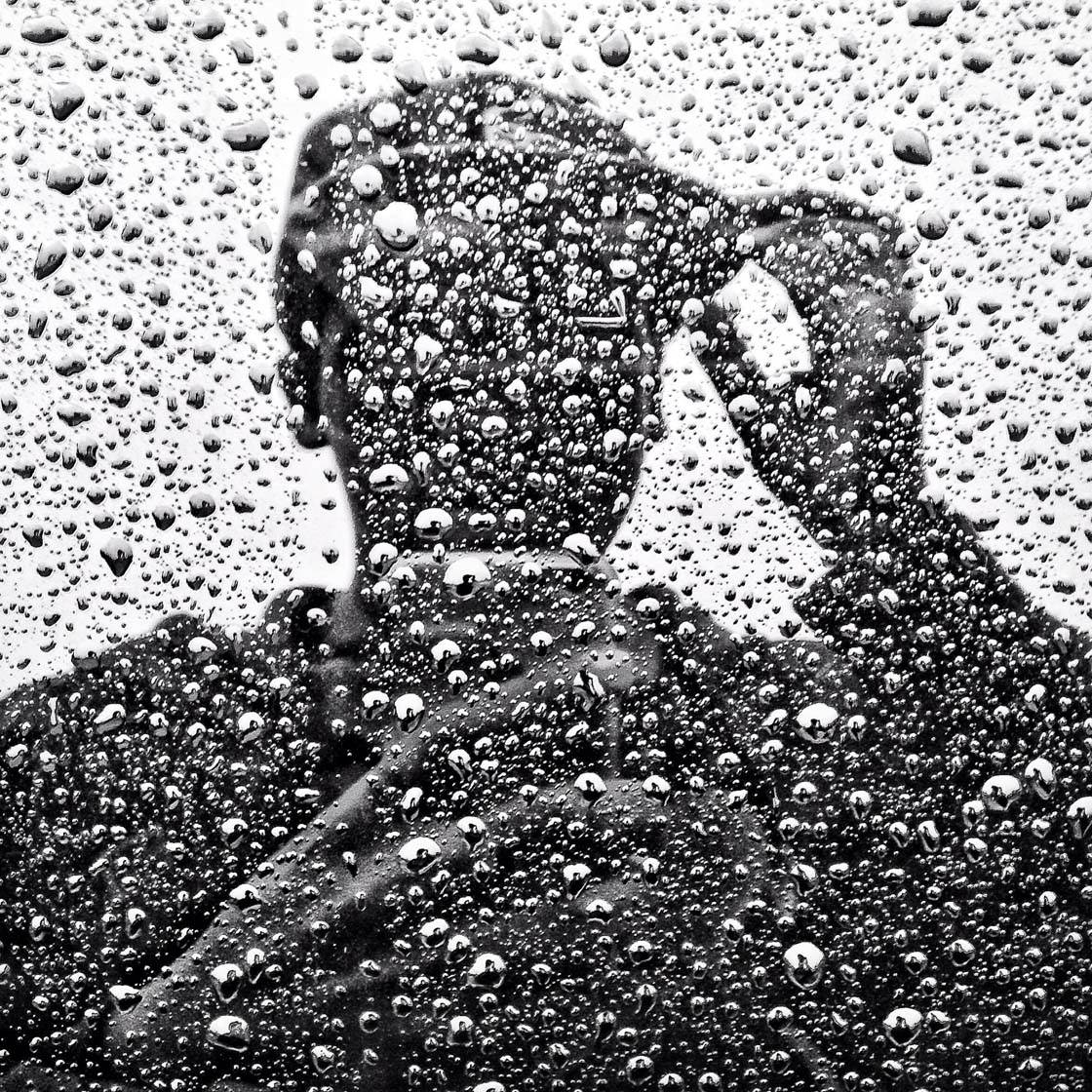
These locations are fantastic for capturing reflected light in raindrops. If you get it right you’ll be able to capture reflections of yourself or your subject within each individual water droplet.
Place your iPhone fairly close to the water droplets, and make sure you lock focus on them by holding your finger where a droplet appears on the screen for two to three seconds until you see AE/AF Lock.
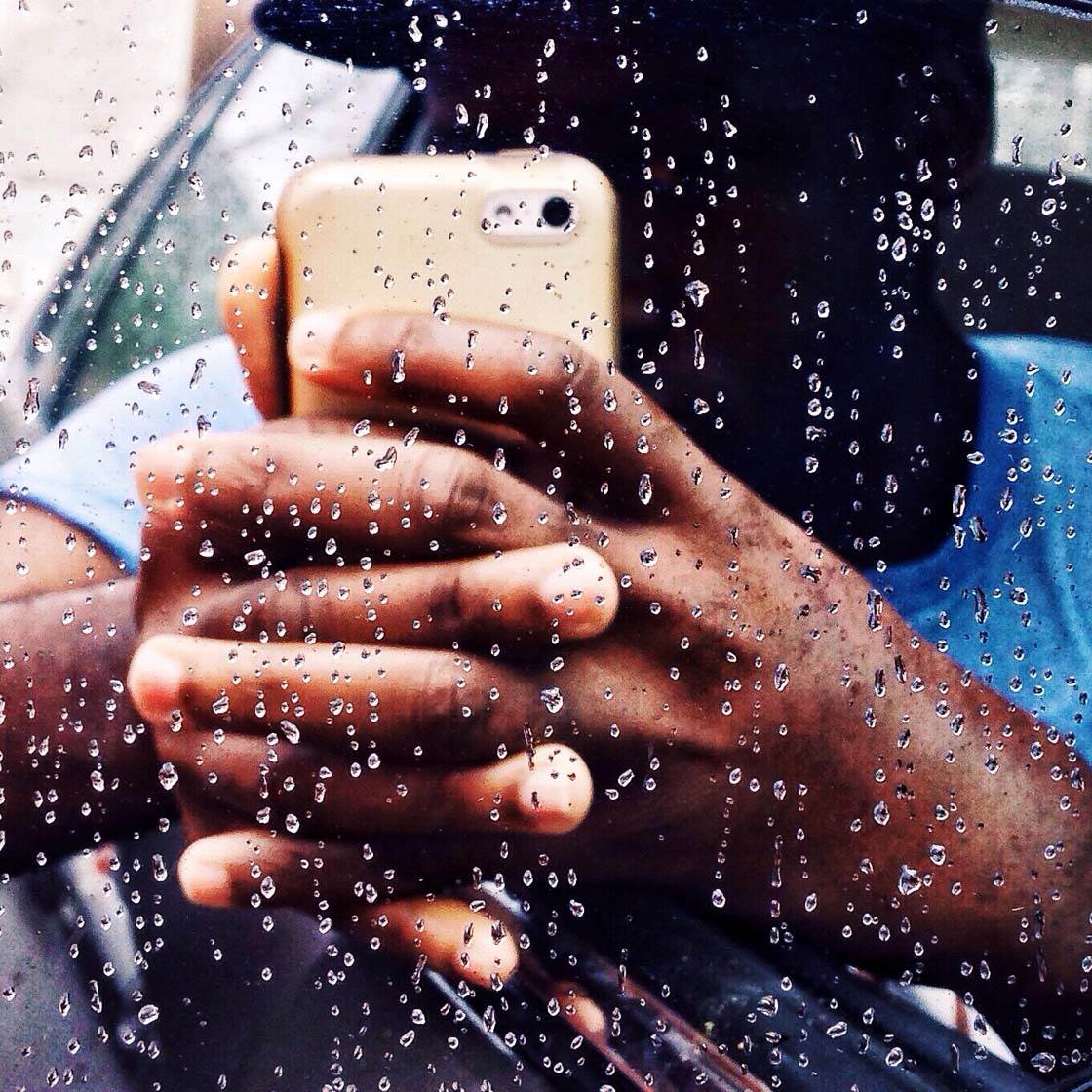
If you’re shooting through glass, the backdrop will become blurred when the raindrops are in focus. Adjust the exposure by sliding your finger up and down on the screen. Exposure should be set so that you can see detail in the raindrops.
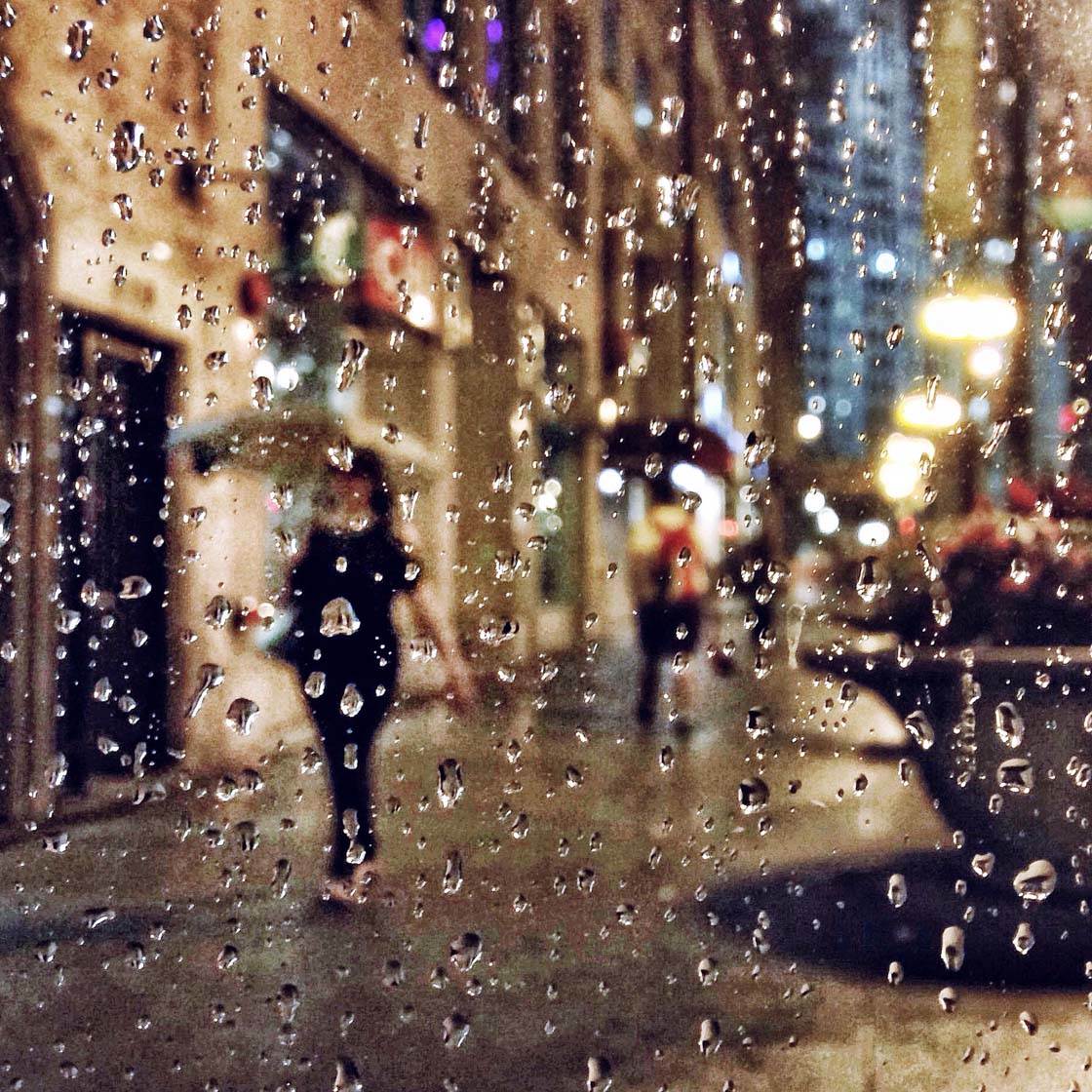
If there hasn’t been any rain or you can’t find a suitable surface for your water droplet photography, a simple solution is to use a plastic CD cover as the medium and a tiny water spray to produce water droplets.

If you have a macro lens for your iPhone you’ll be able to take extreme close-ups of the water droplets, capturing incredible detail of the reflected subject in each droplet.
5. Shoot At Night
If you look around your urban landscape at night, you’ll notice colorful reflections from the city lights on rivers, puddles, wet streets, glass and metal buildings, and any other reflective surfaces.

Taking photos in low light is a challenge for the iPhone, and you can end up with blurred and grainy shots if you’re not careful. Apps such as Average Camera Pro and Cortex Camera help to reduce grain and are generally great for taking night shots.
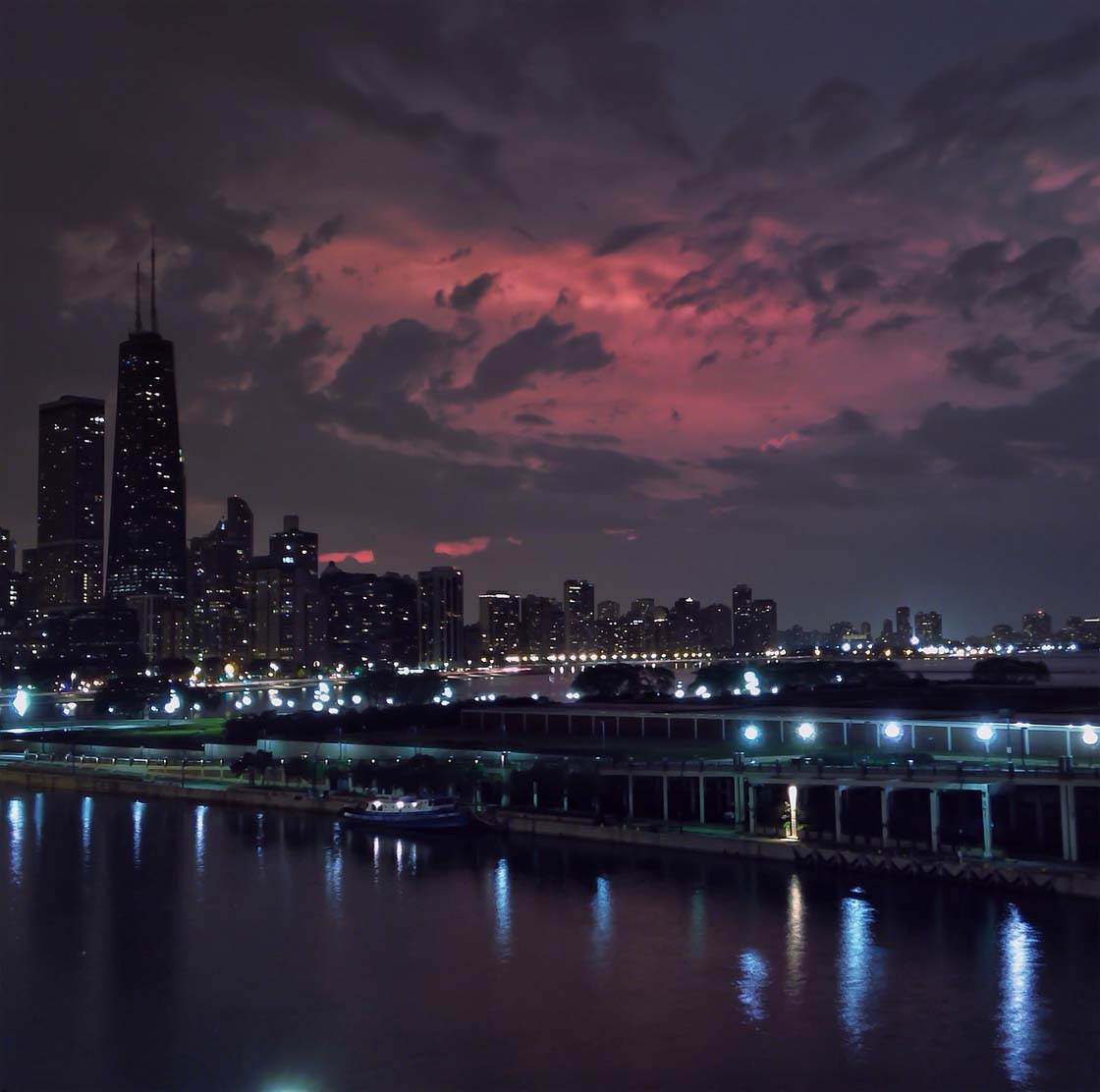
Always be sure to maintain a steady hand when shooting at night in order to avoid blurry images from camera shake. If you have a small iPhone tripod you can use it to keep your iPhone perfectly still. But otherwise try leaning against a wall or lamp post to steady yourself.
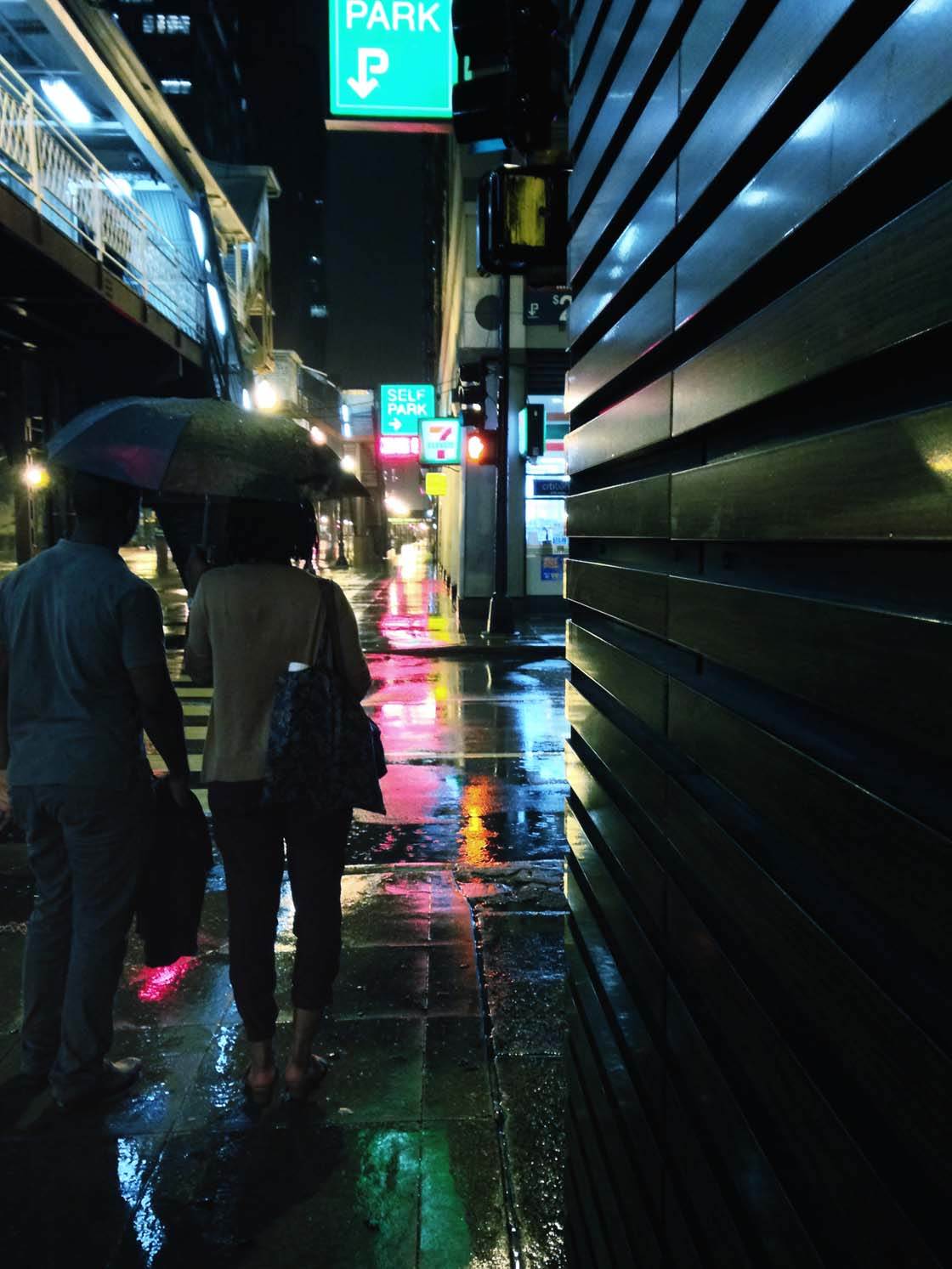
Street lights and lights from signs on buildings create wonderful colored reflections on a rainy night. So next time it rains, be sure to explore the city after the sun has set to see what amazing reflections you can capture out on the streets.
6. Capture Abstract Reflections
You don’t always have to capture a clear subject in your reflection photos. There are many abstract reflections around us that we tend to overlook, and these can make incredible iPhone photos.

Shiny buildings and sculptures that have a curved or unusual shape can create fantastic distorted reflections such as the one above. Capturing the reflection along with the subjects in the background makes this picture even more interesting.
You can also create abstract reflections by photographing textured surfaces. Have you ever noticed how movement in a body of water made by birds or boats in motion creates ripples that distort the reflections?
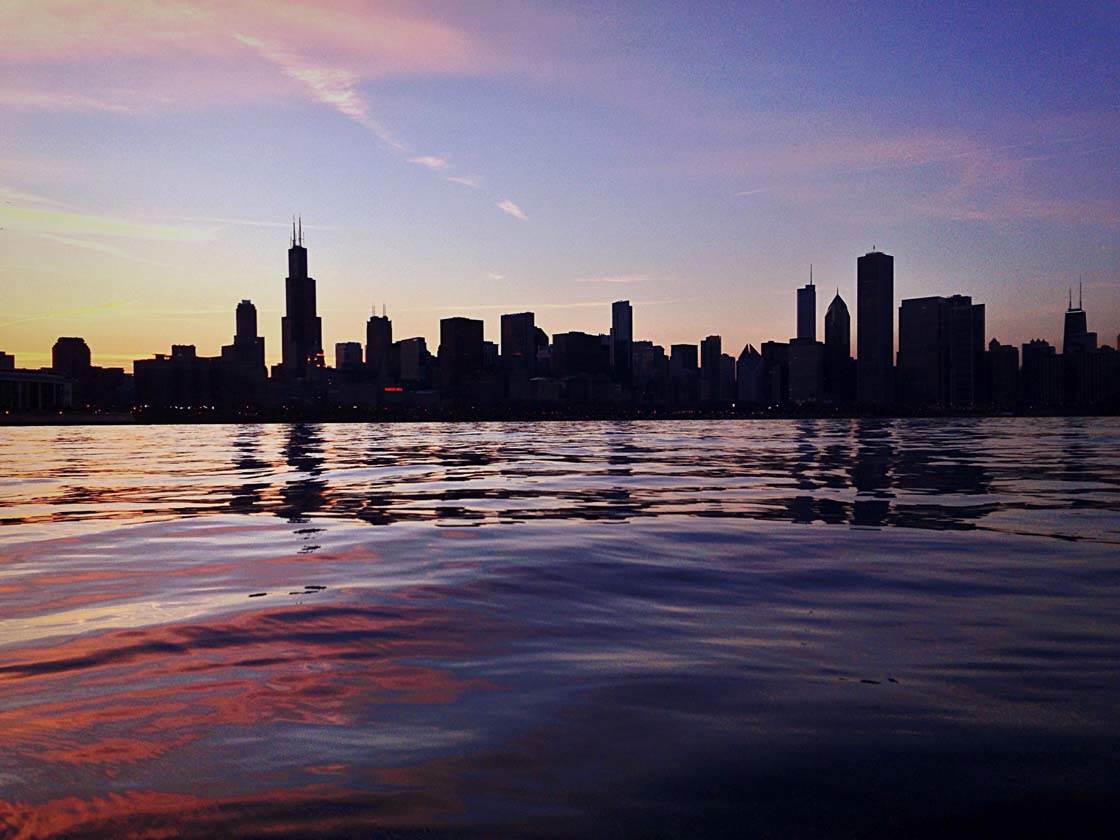
Pay attention to any sudden movement in water as this is the perfect opportunity to create a unique abstract reflection photo.
The ripples in the water will distort the reflections, creating zigzag lines and patterns in your photo. If you can capture the reflection of a beautiful colored sky in the water too, this is an added bonus!
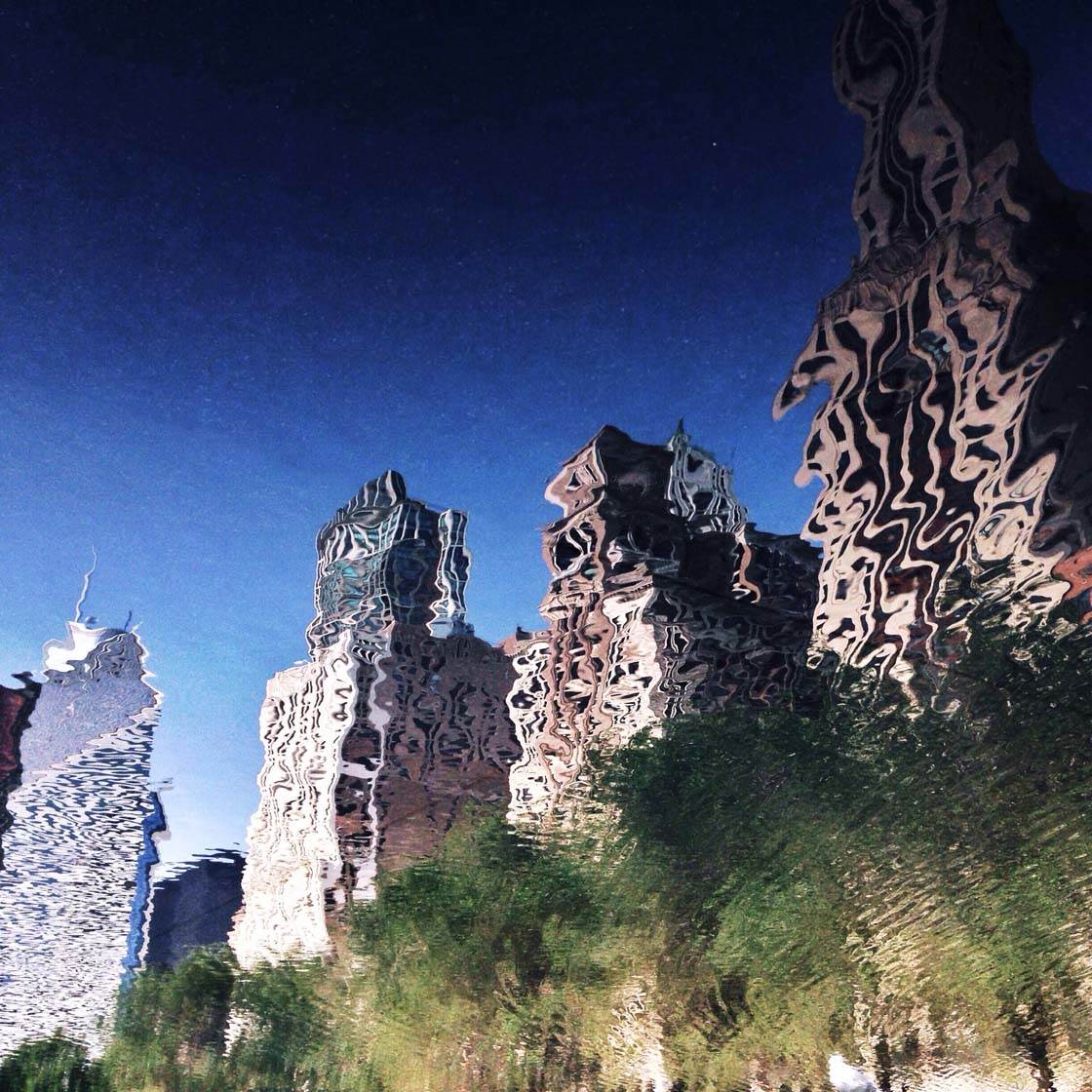
Swimming pools, ponds and lakes provide a great setting for this technique. It will be easier to create some motion in a small pool as opposed to a larger body of water such as a lake.

Try swishing your hand around in the water to create gentle ripples, throwing a stone into a pond to create concentric rings, or asking someone to jump into the water to create small waves. Using these techniques you can create beautiful reflection photos with a painterly quality to them.
7. Use Reflective Props
The great thing about reflection photography is that the opportunities for creativity are endless. How about using props like mirrors and other reflective objects to spice up your reflection photography?
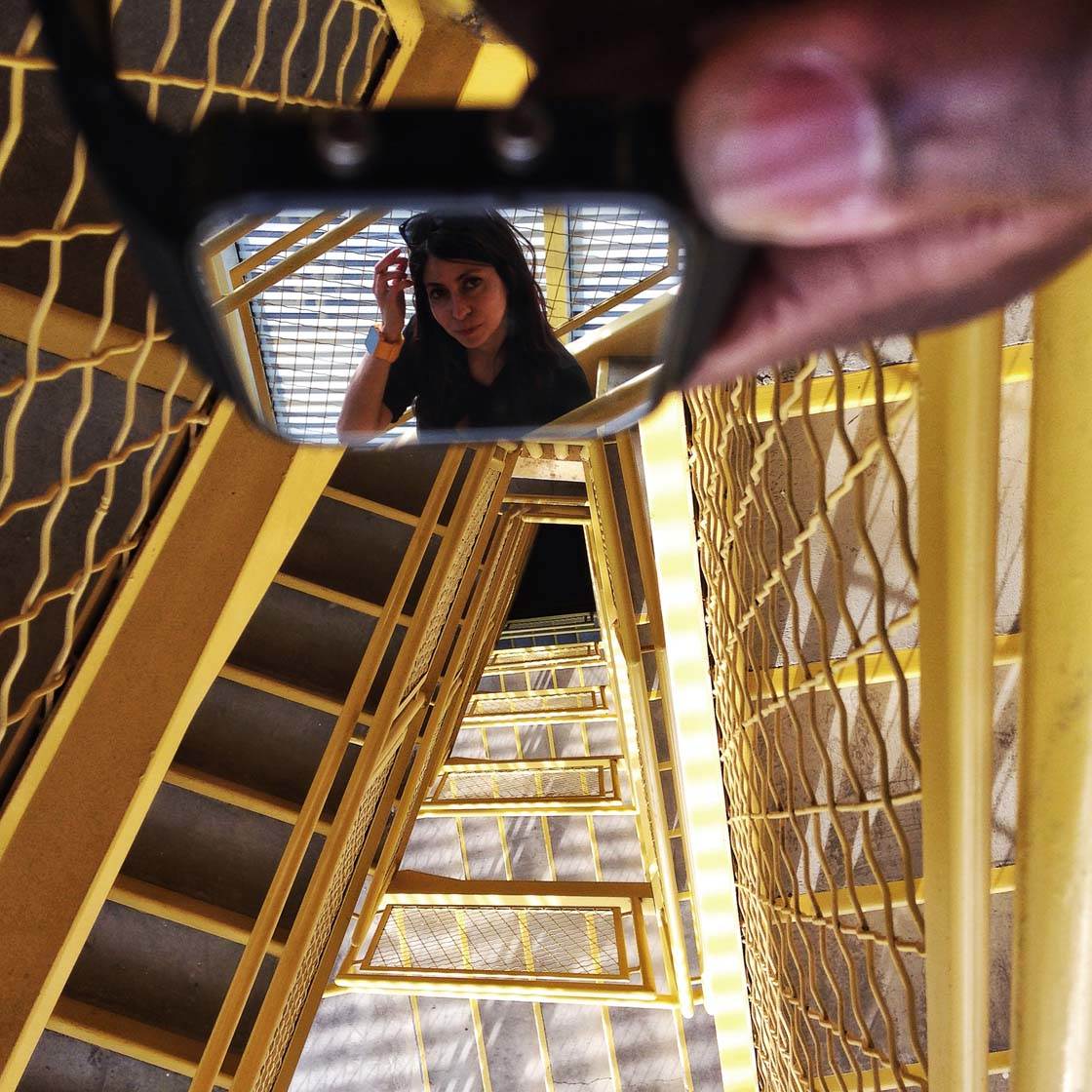
With small reflective props like mirrors you have more control over the position of the prop compared to photographing a building whose perspective can’t be easily altered. Portable mirrors can be used to produce a creative effect that wouldn’t otherwise be attainable.
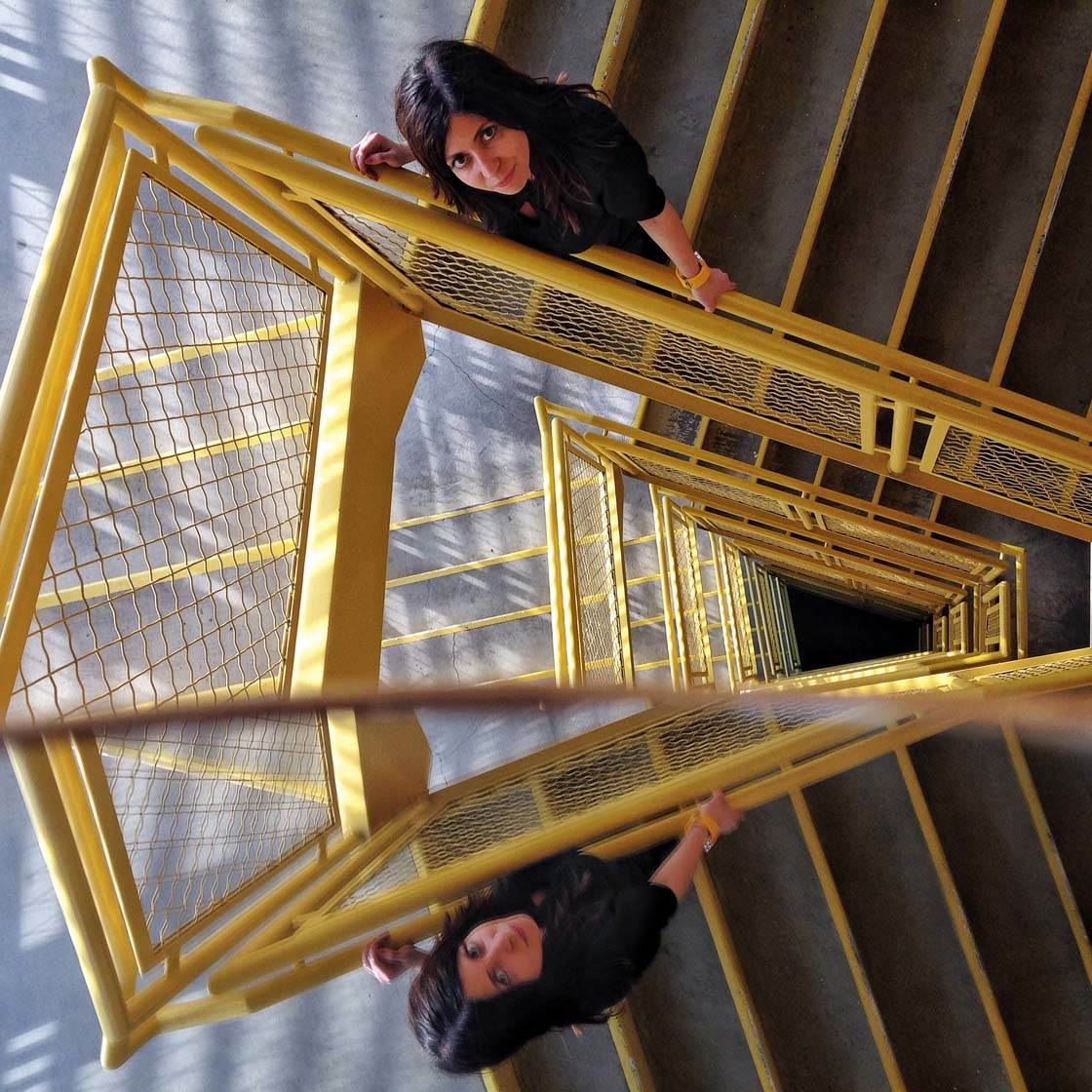
Broken mirrors are especially useful for creative portraits. The pieces can be arranged in a manner that creates a visually appealing image with a wonderful sense of mystery.
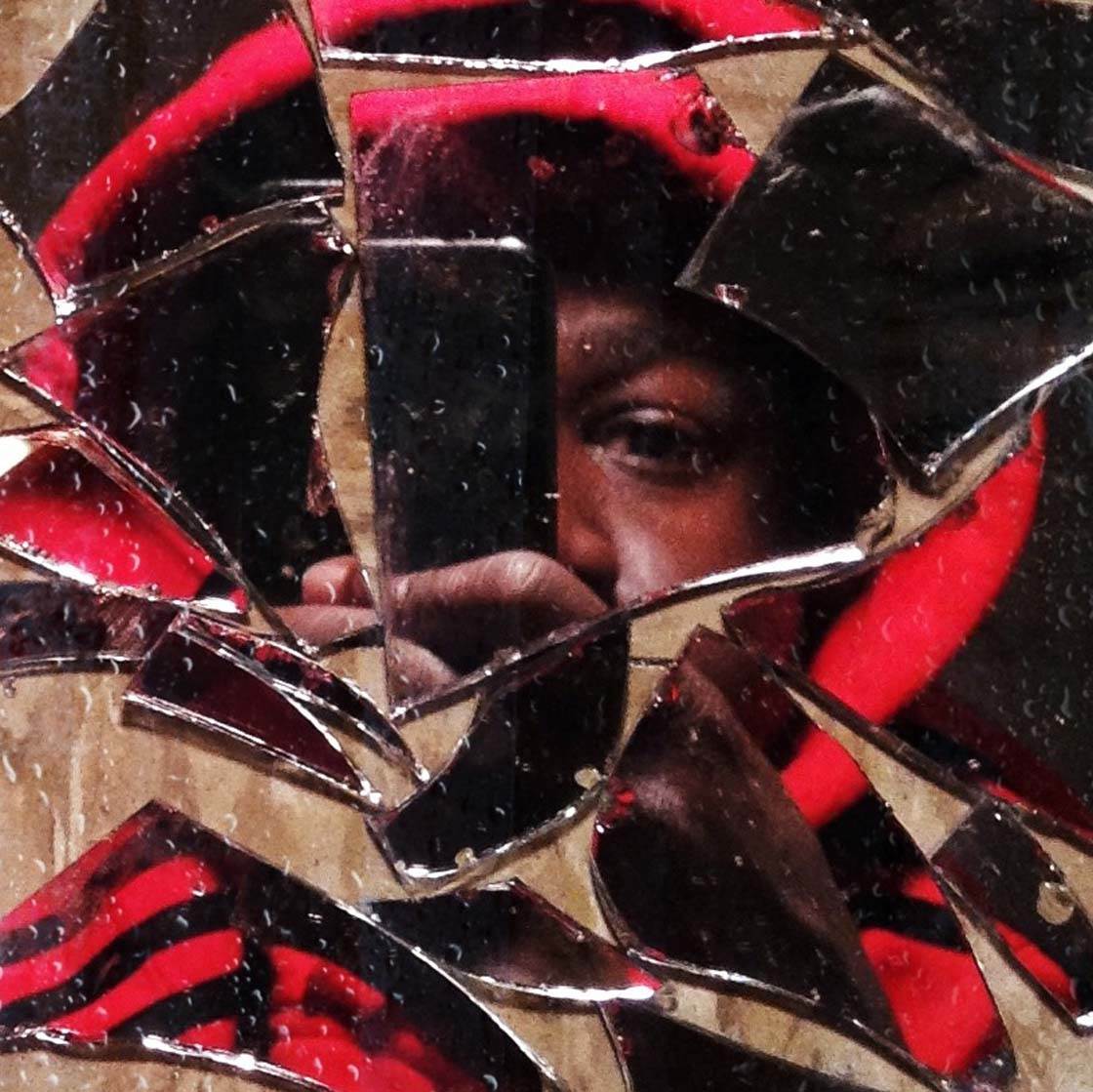
Crystal balls are also an excellent outlet for creativity. They produce inverted reflections that create an intriguing effect. When combined with the right backdrop elements such as symmetry and leading lines, a fine piece of art can be created.

Look around your home or explore a local thrift store to see what kind of interesting reflective props you can find. Then take them out into the city and experiment with capturing reflections in unique and creative ways.
Conclusion
Creating and capturing reflections has infinite possibilities, especially in urban environments. With water and other reflective surfaces there’s so much you can do to broaden your creative potential.
Hopefully these tips have given you an understanding of how to go about shooting reflections in interesting and varied ways.
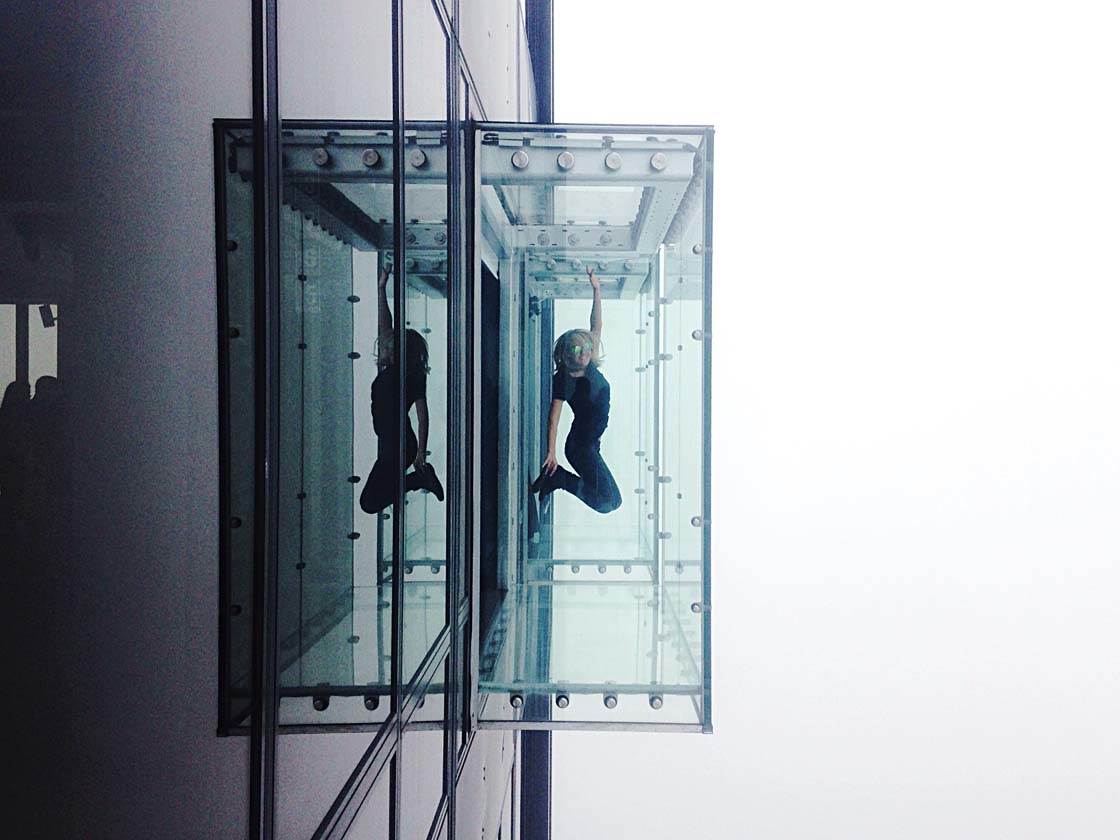
Remember that good light, dramatic clouds, strong subjects, lines and symmetry add interesting detail to reflections in urban settings.
With a bit of practice and experimentation you’ll soon be capturing sensational reflection images with your iPhone!


Leave a Reply
You must be logged in to post a comment.